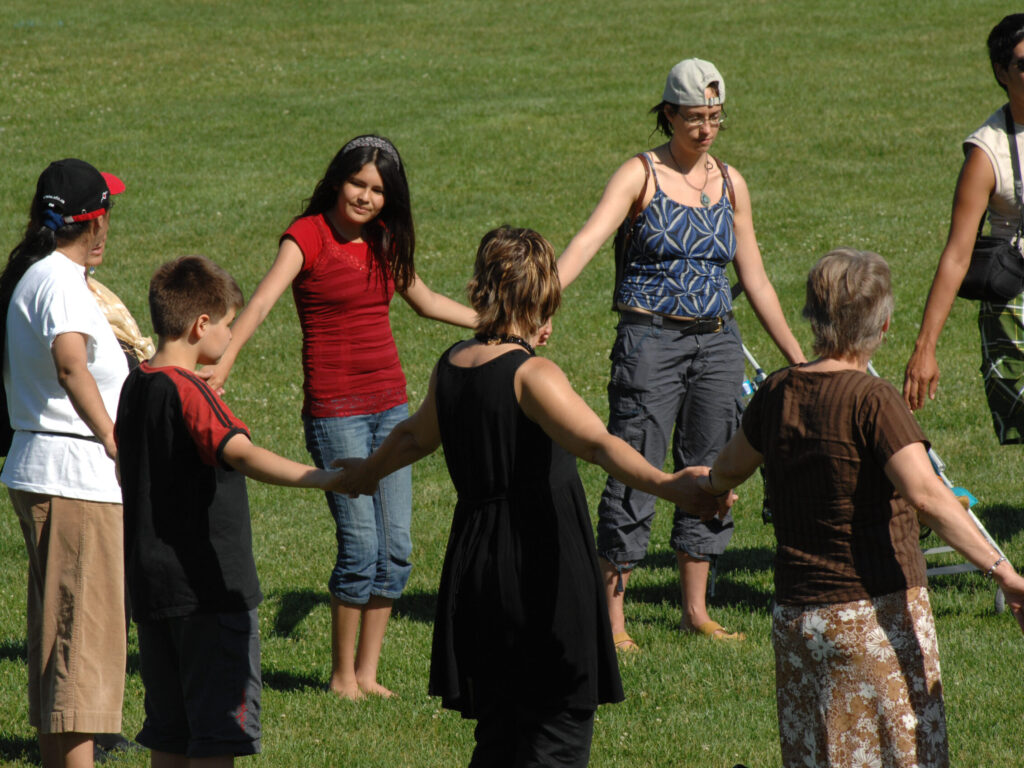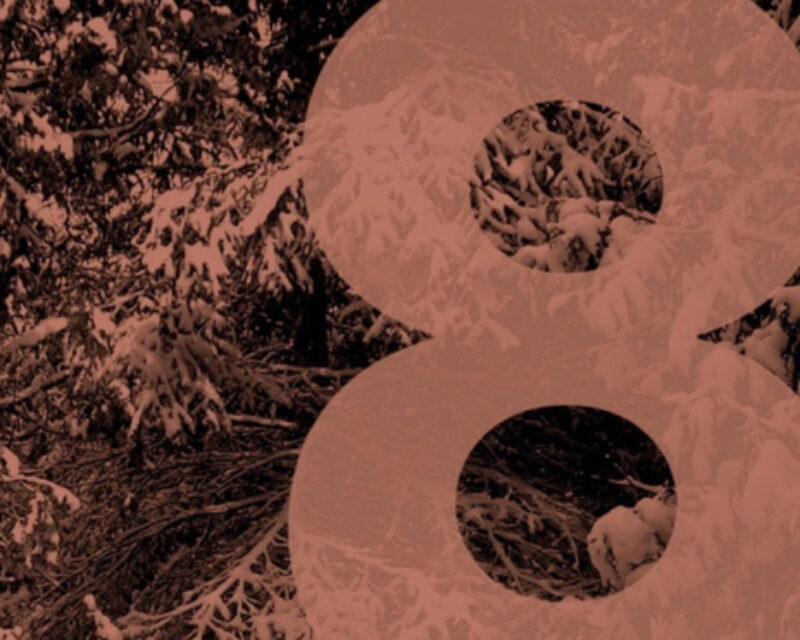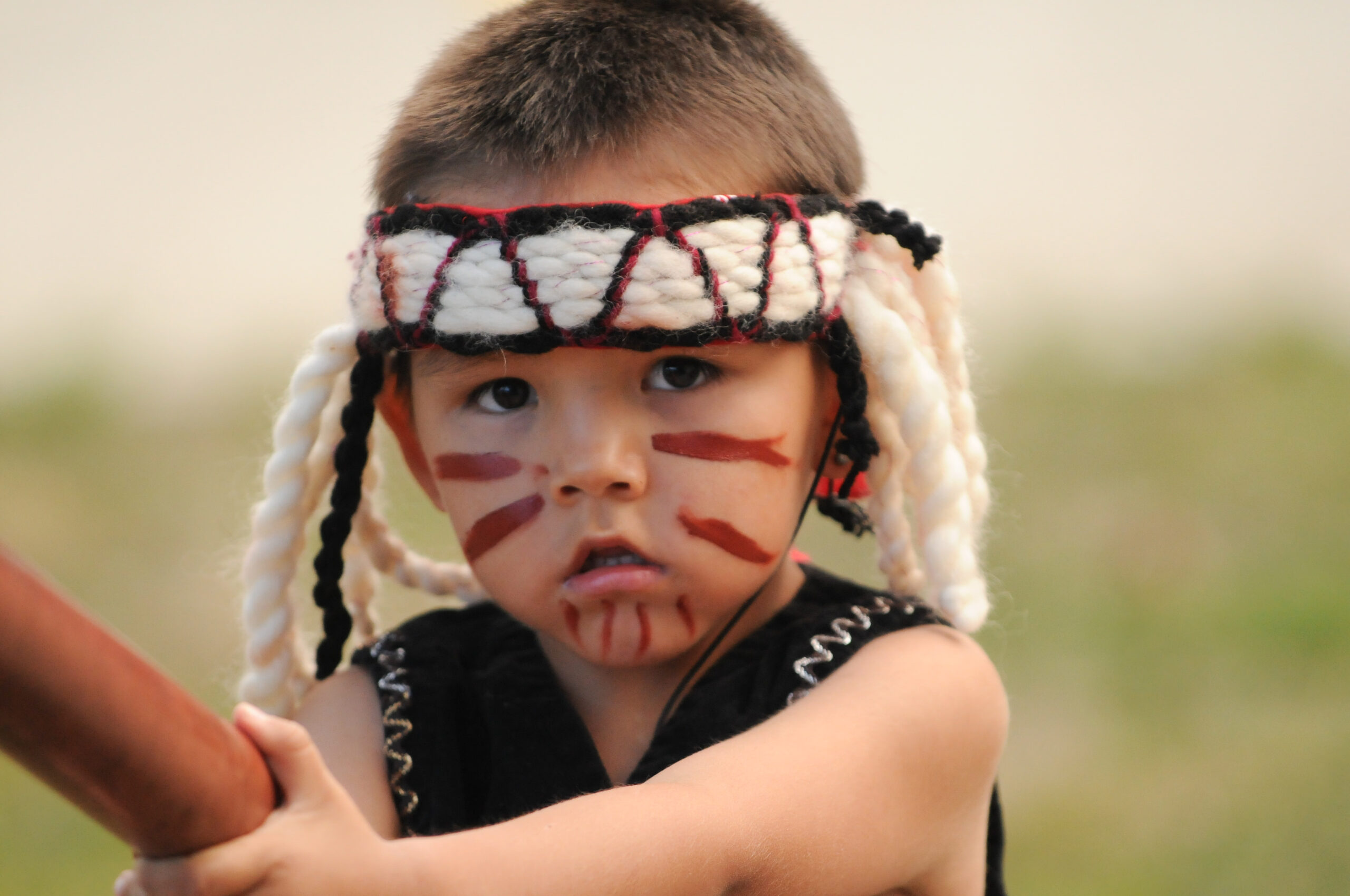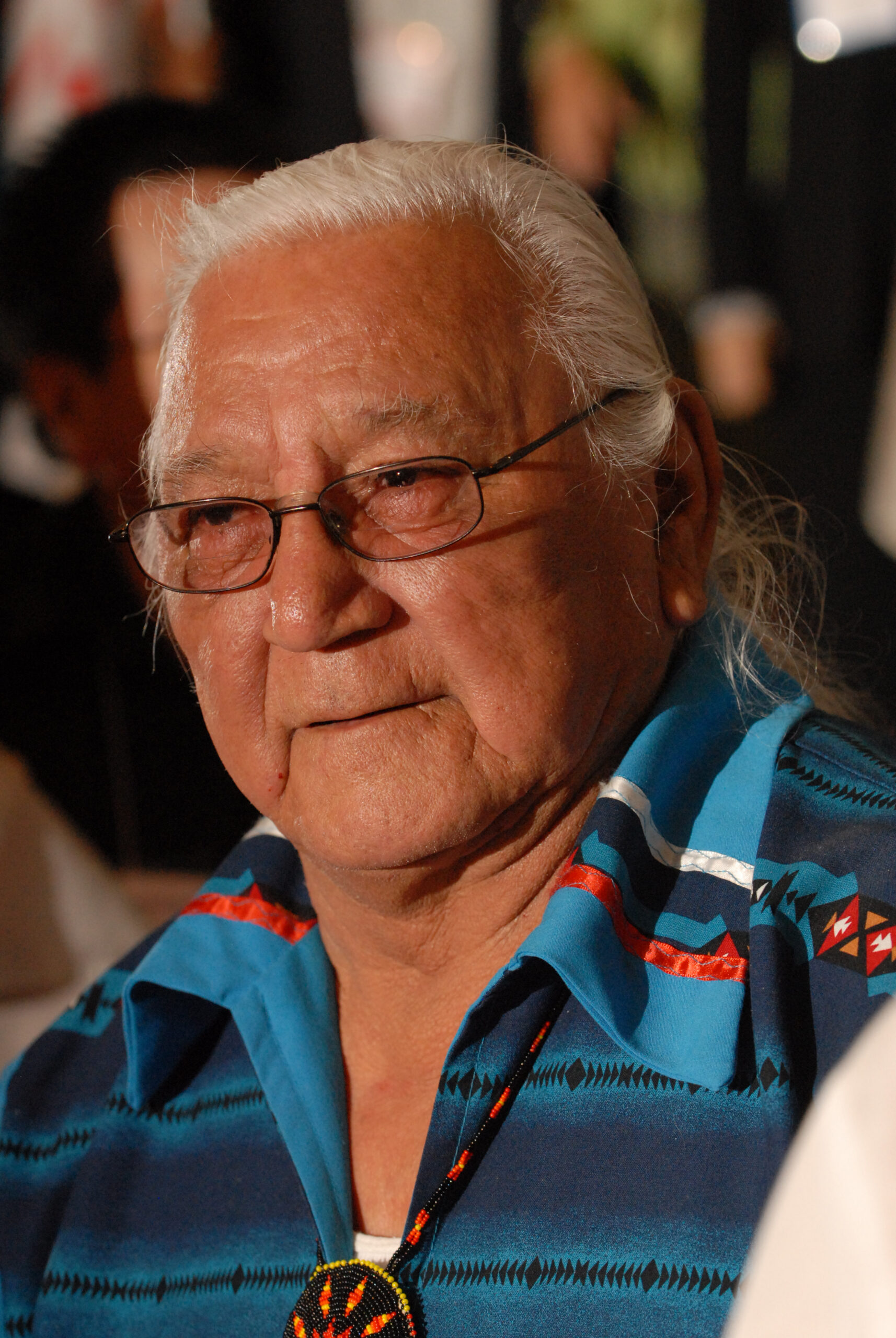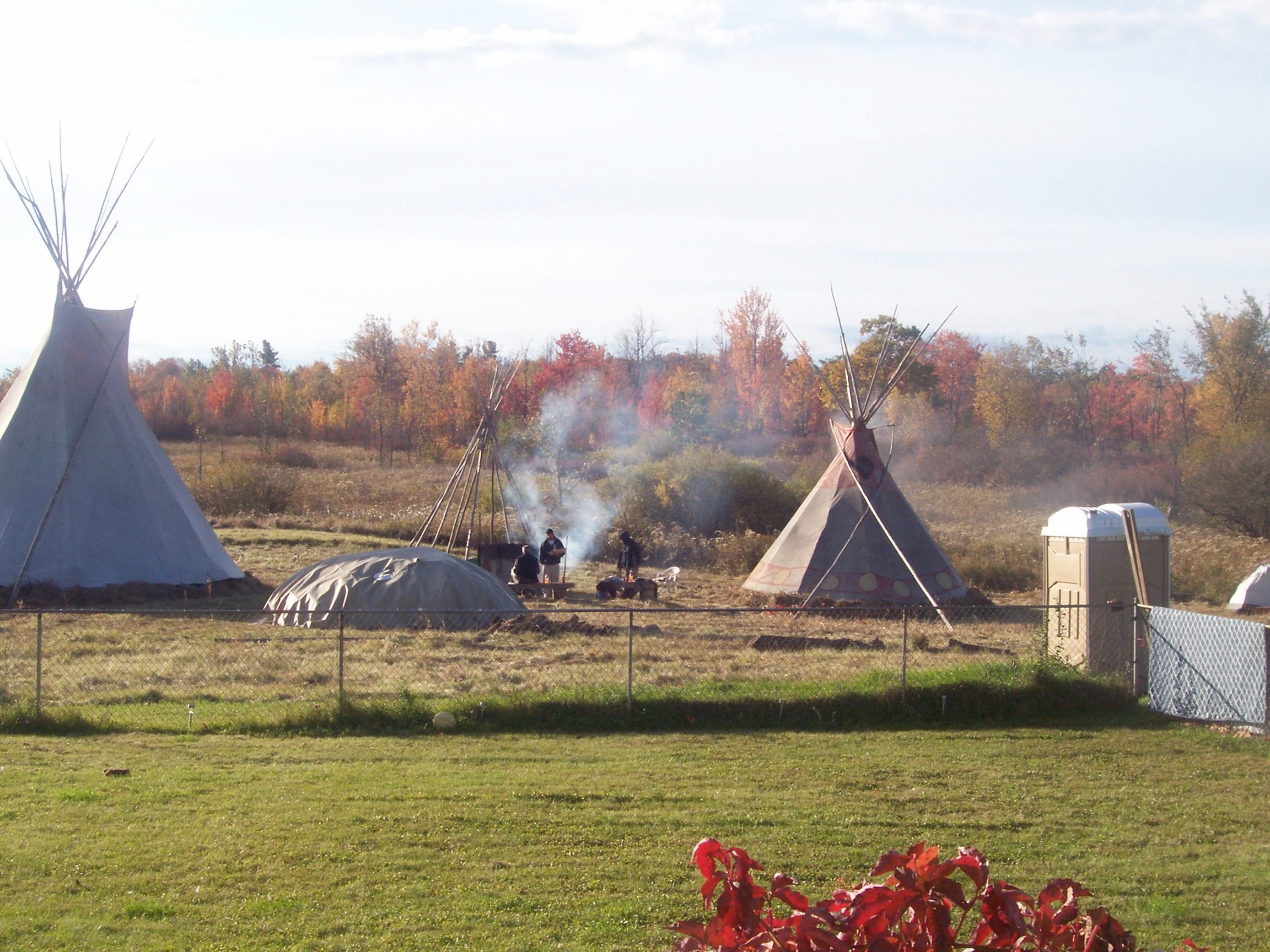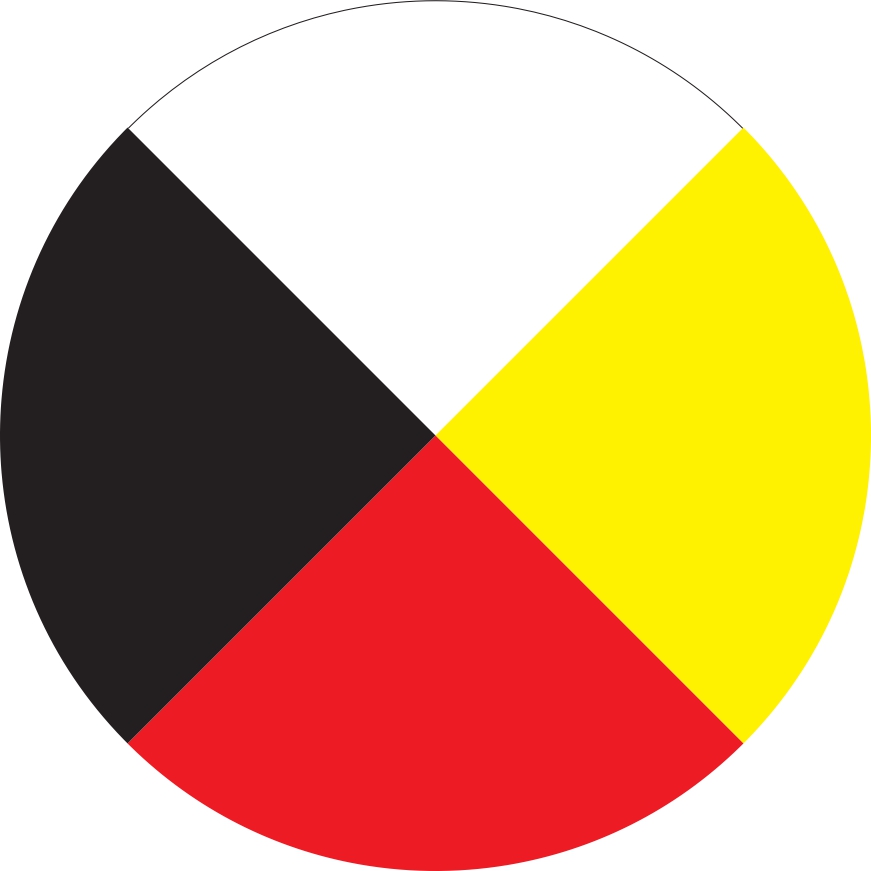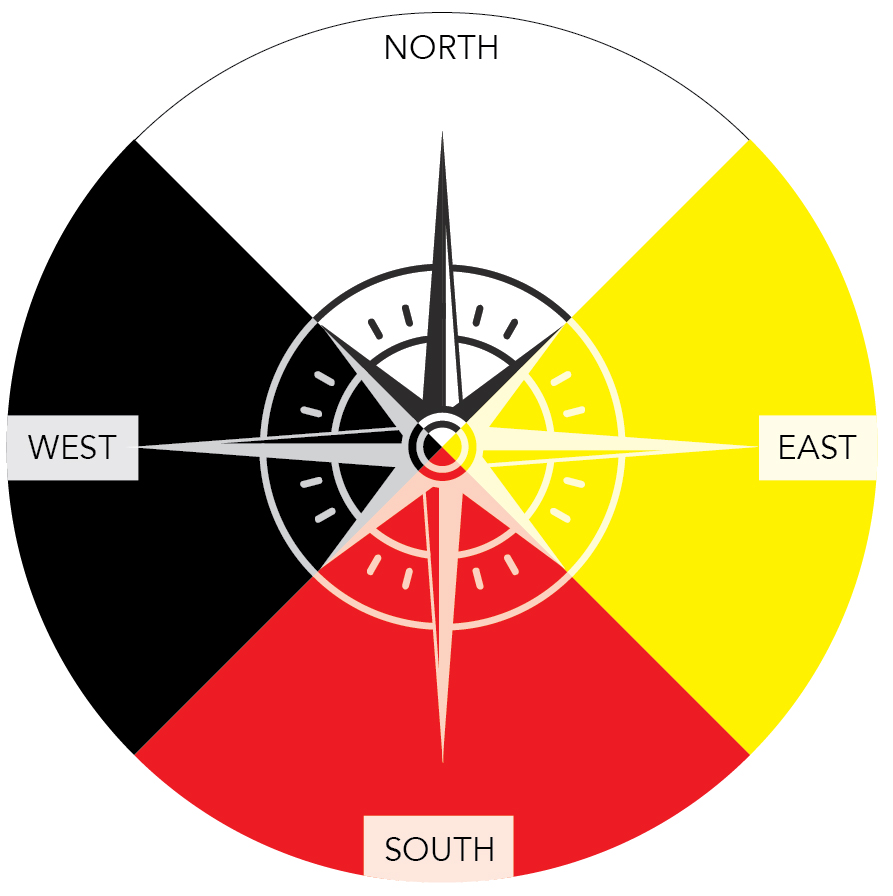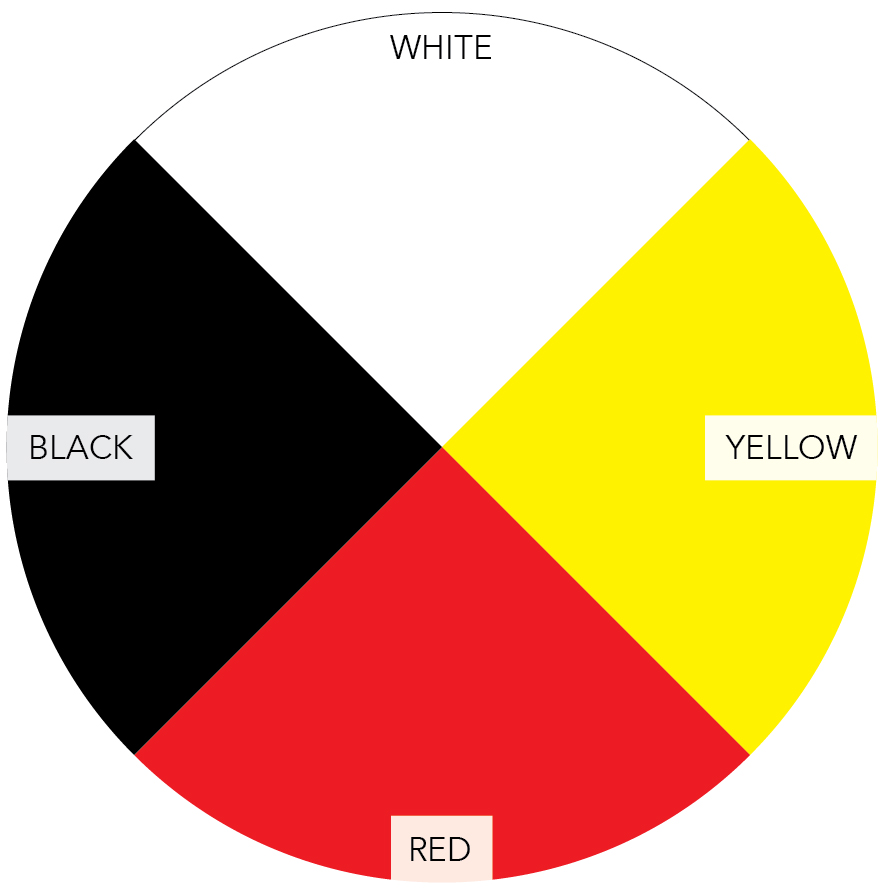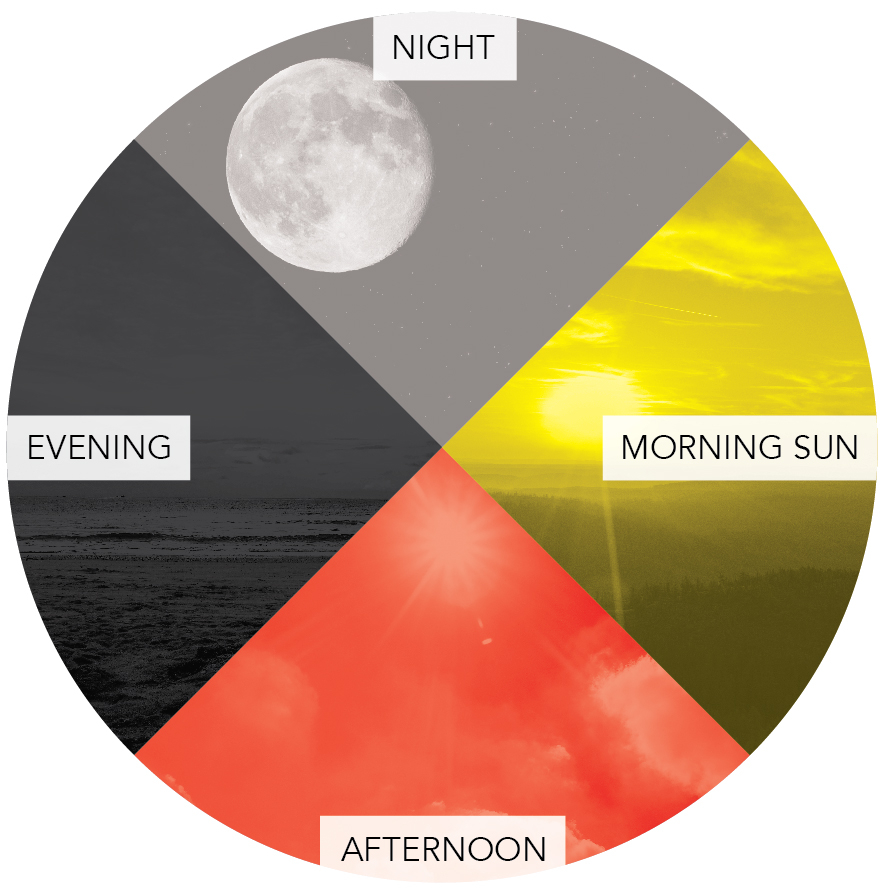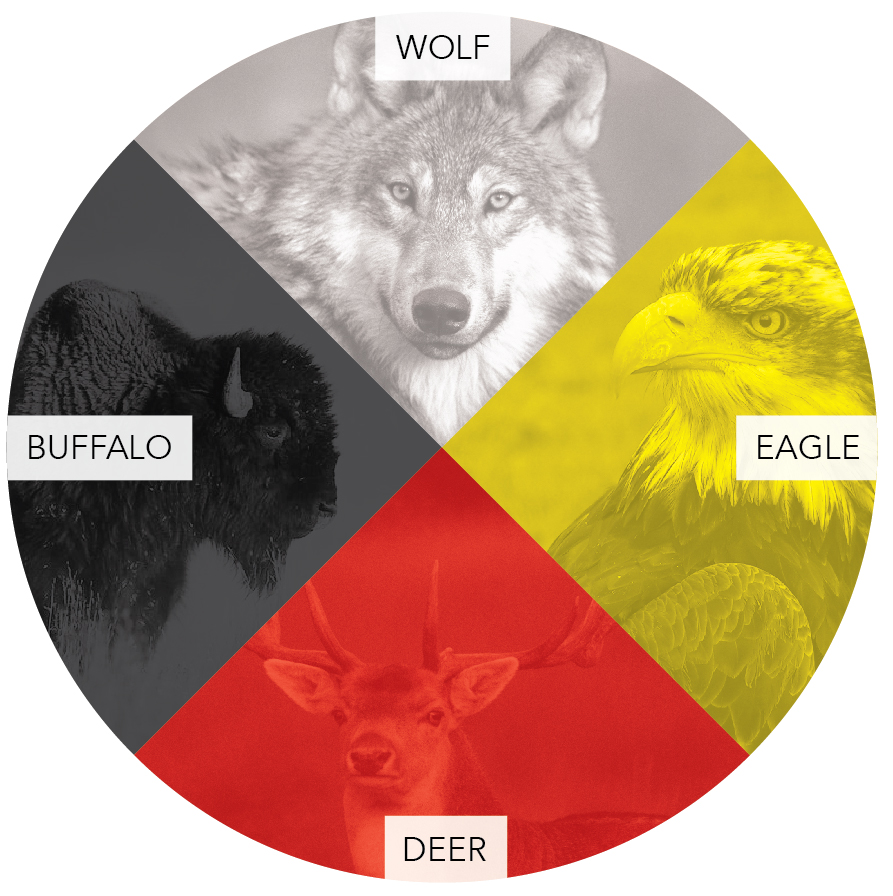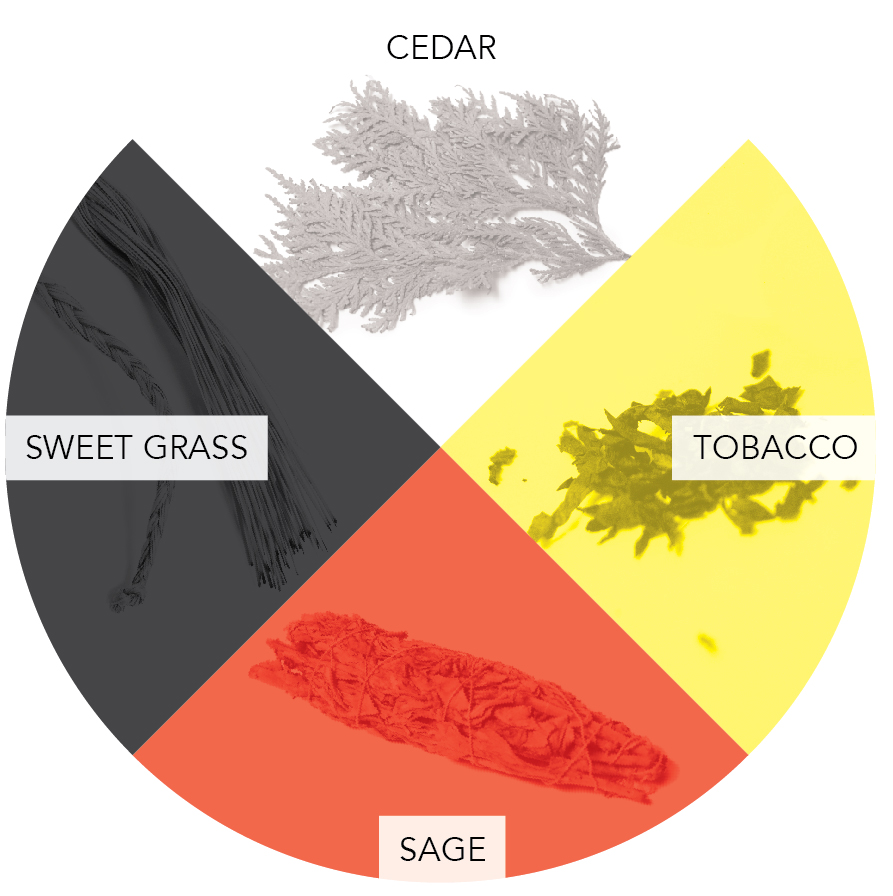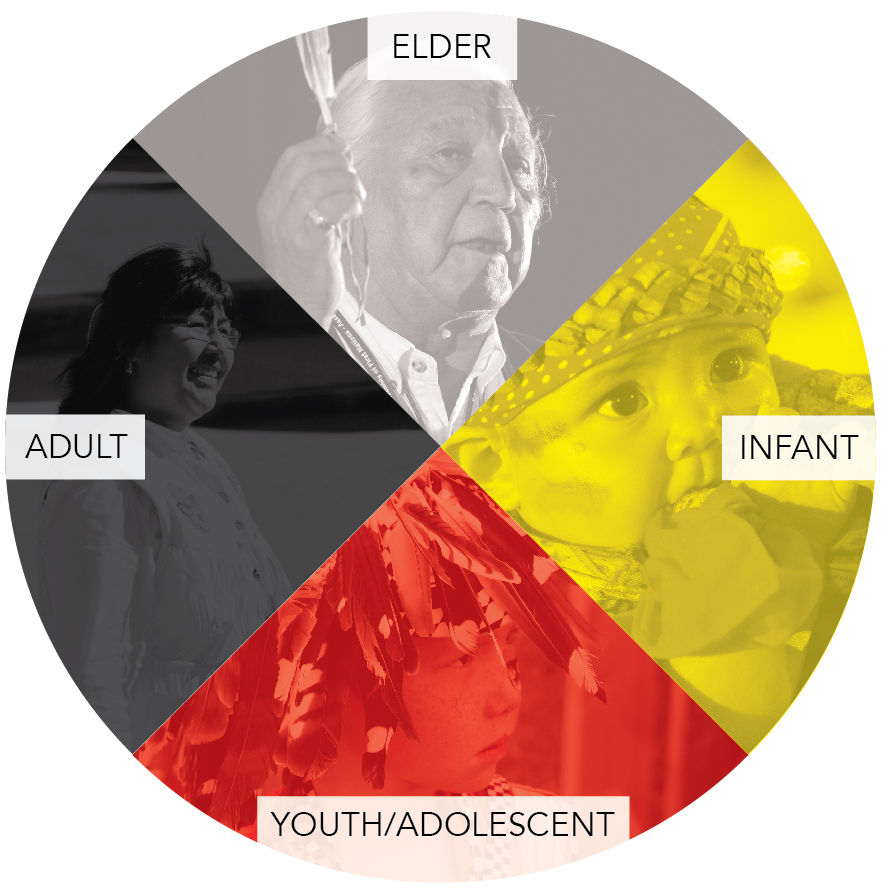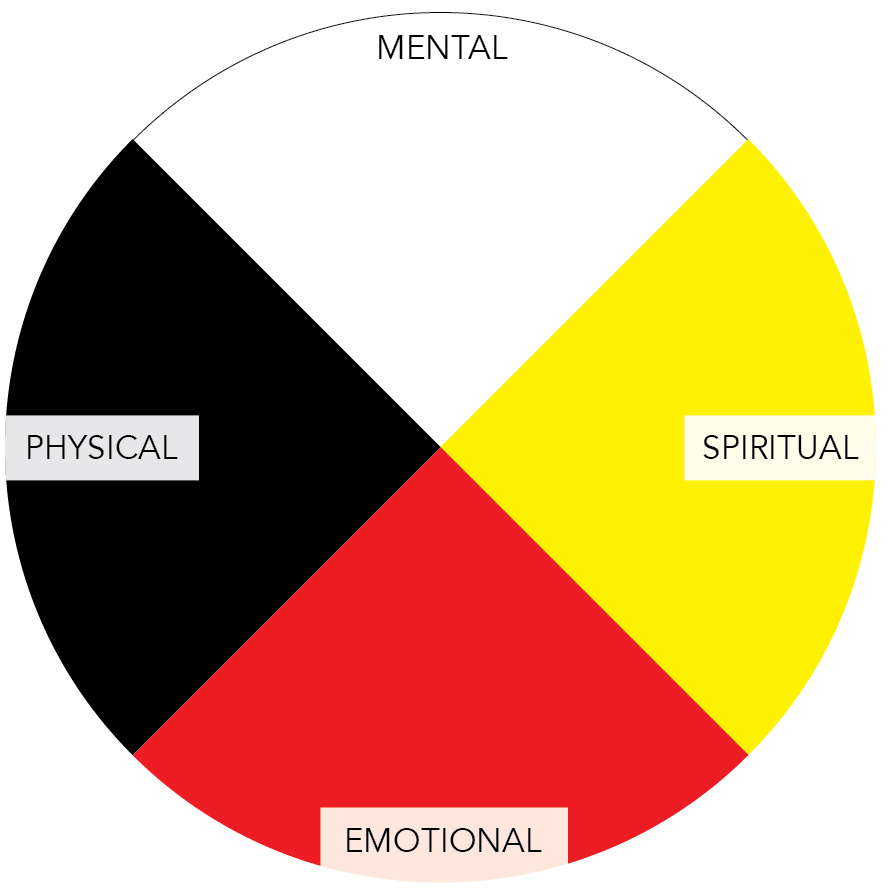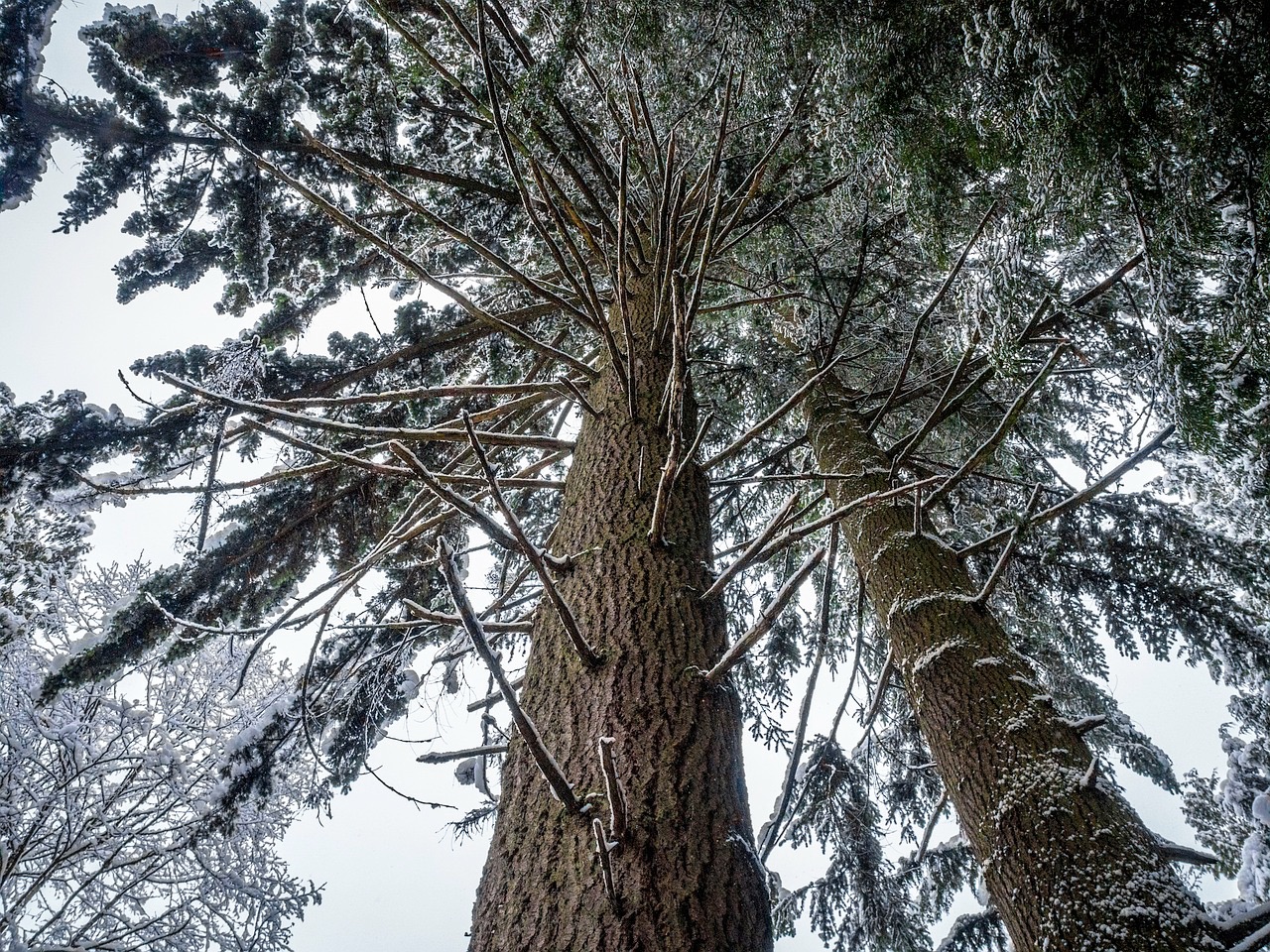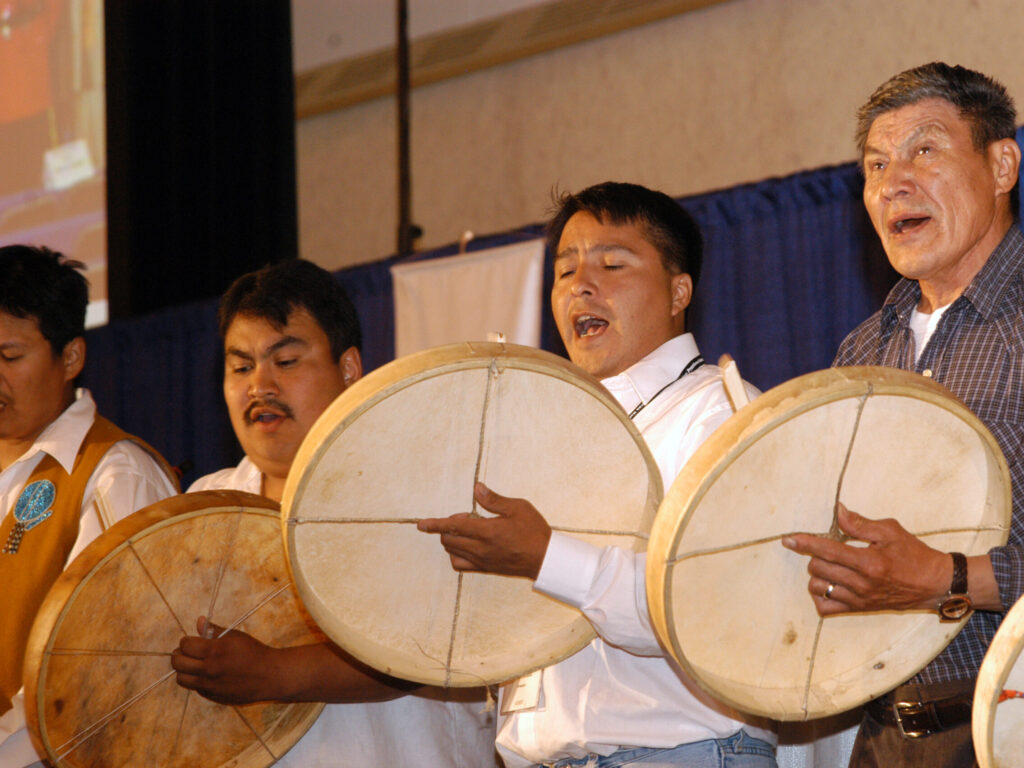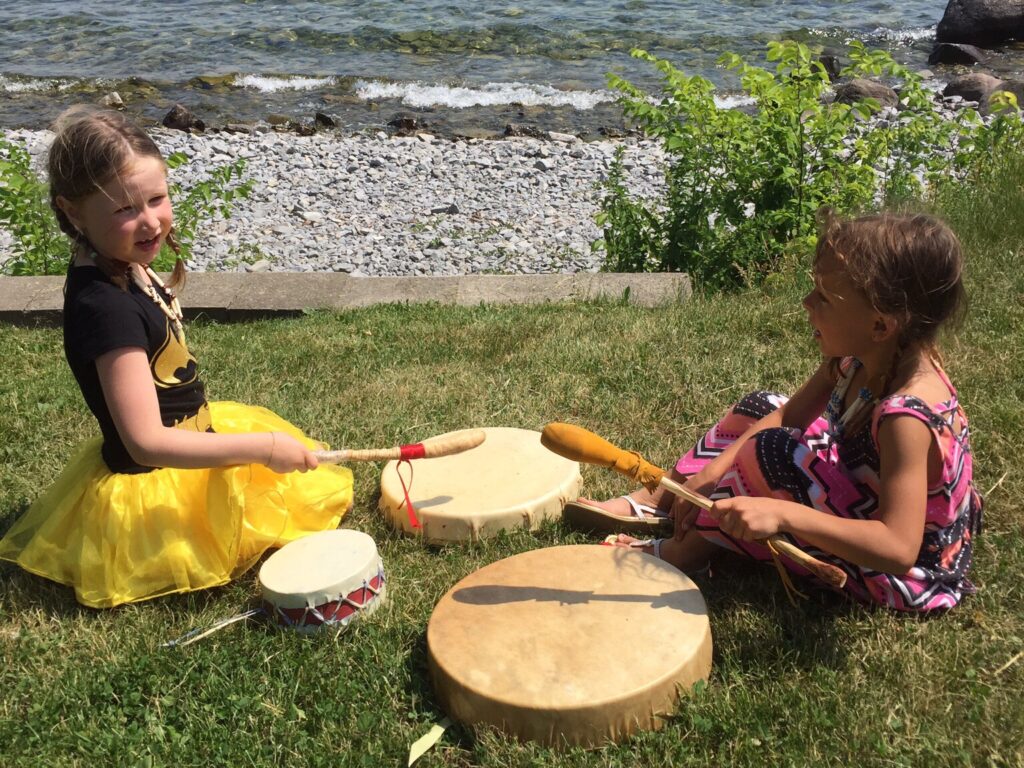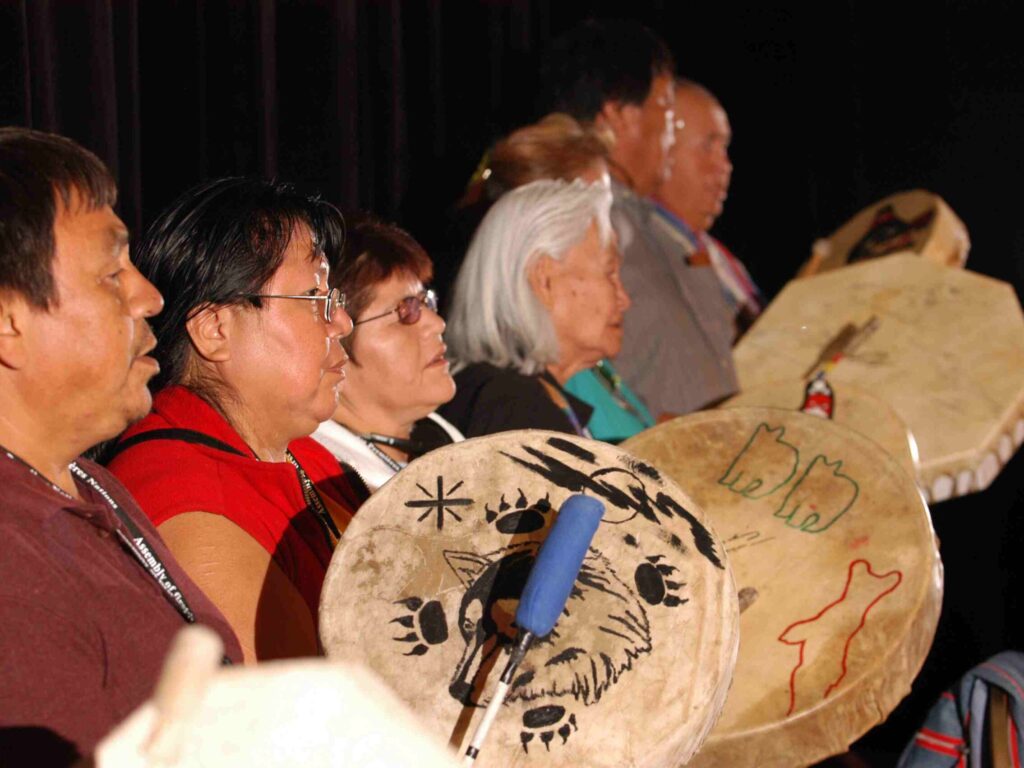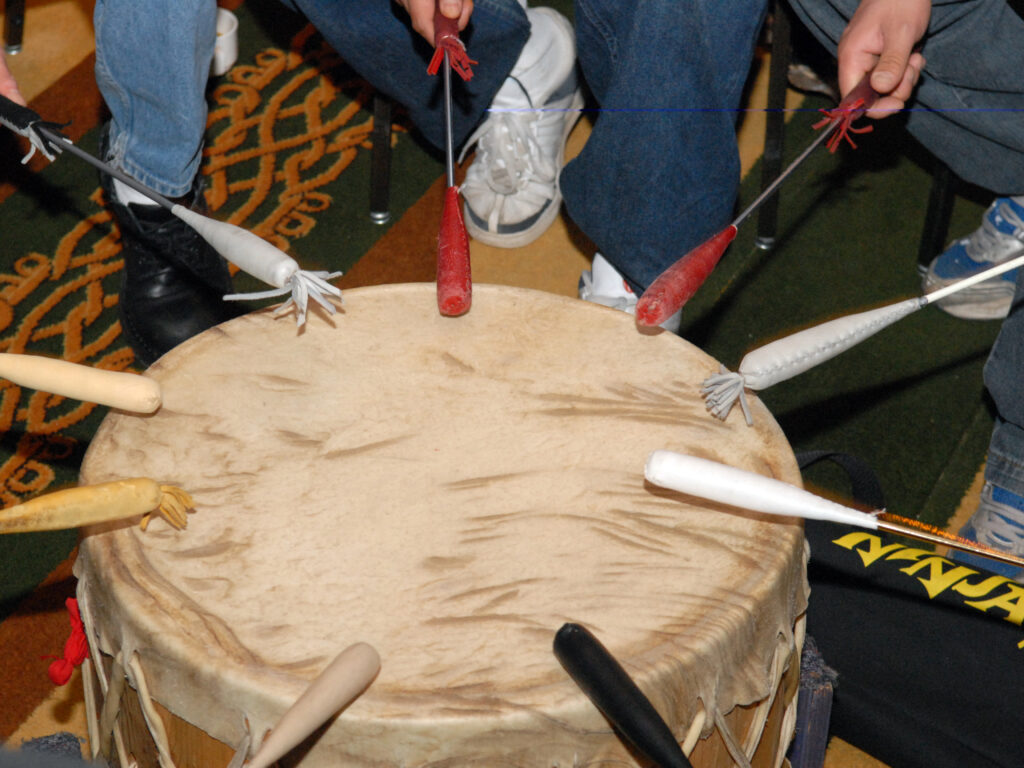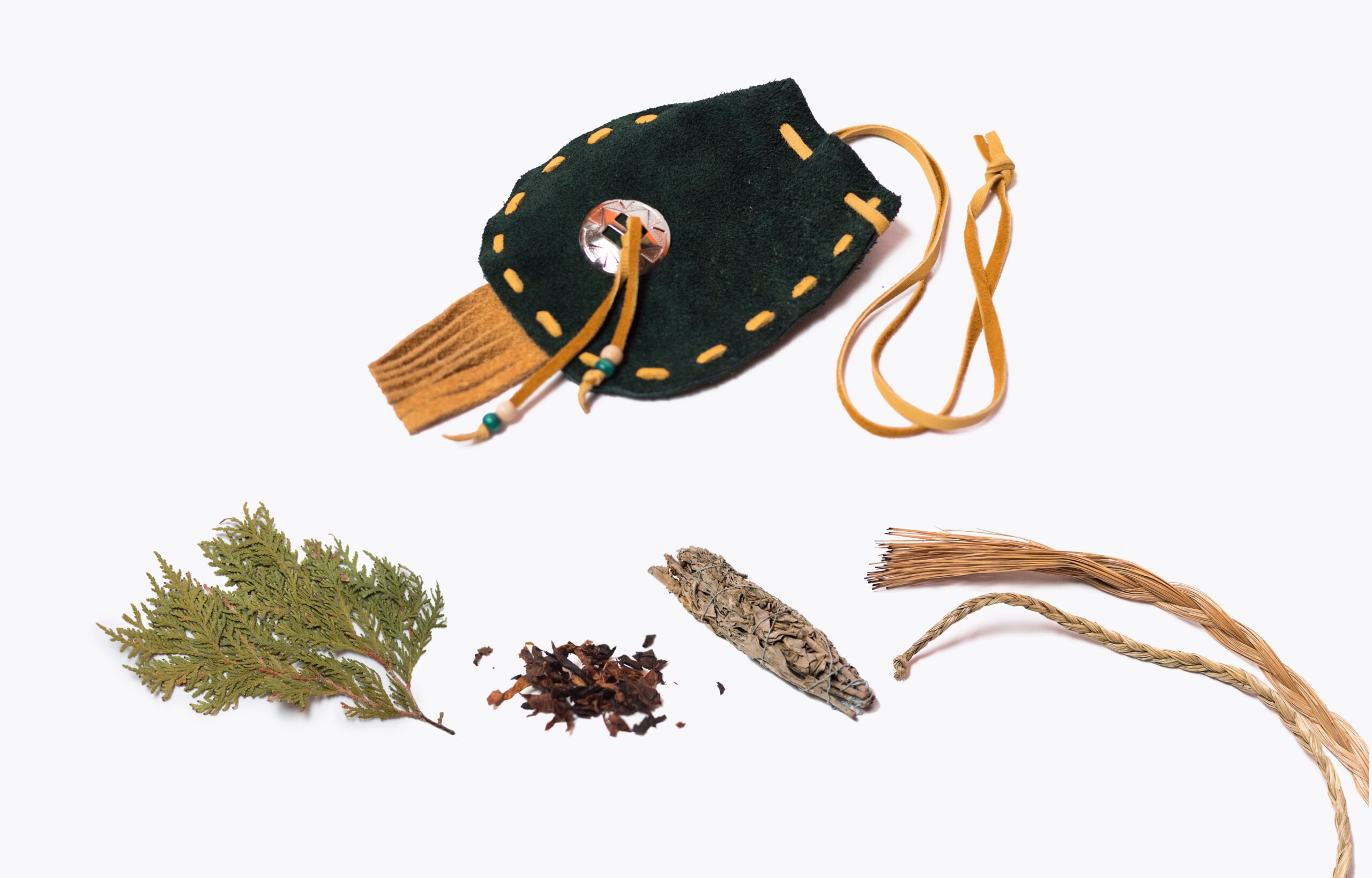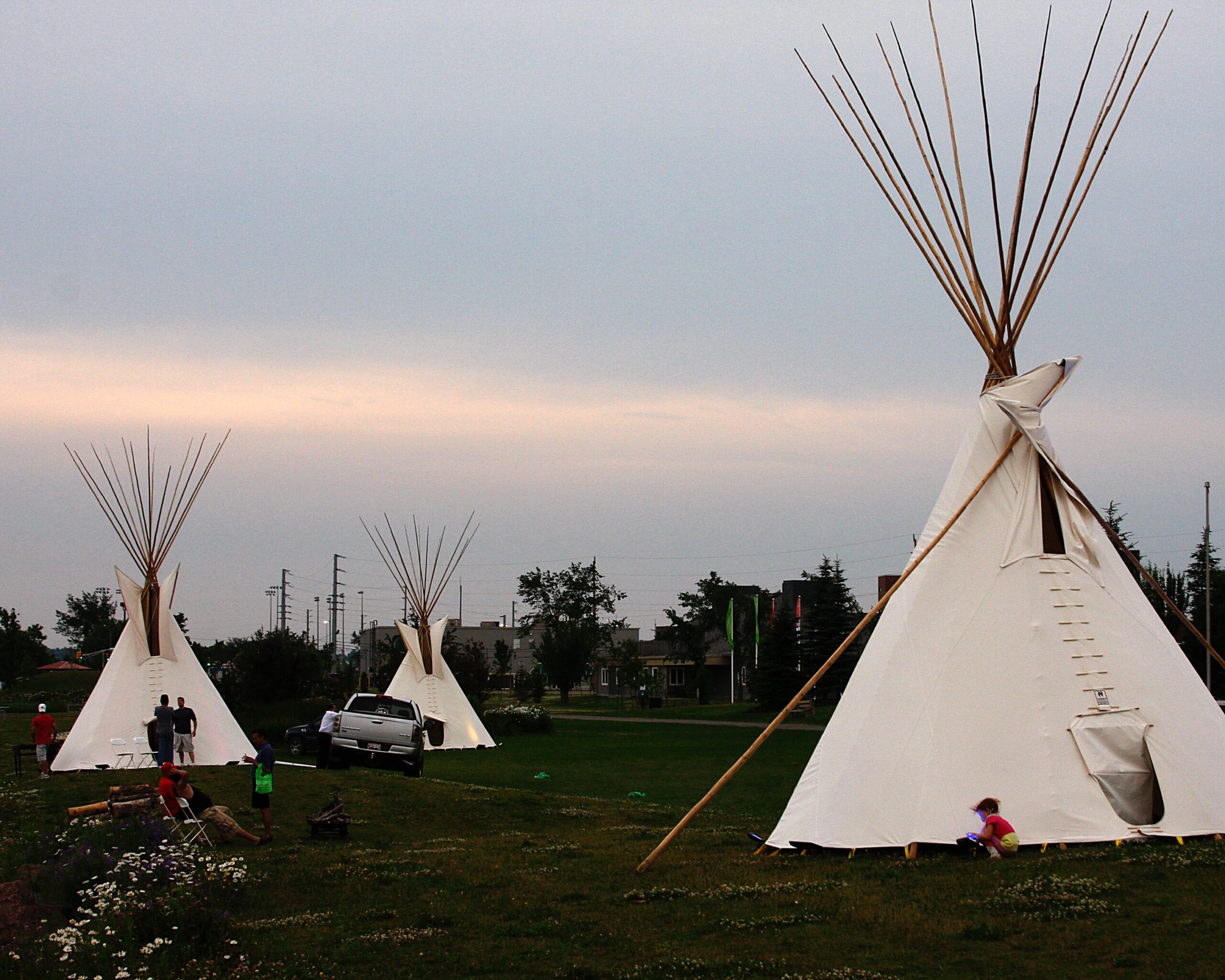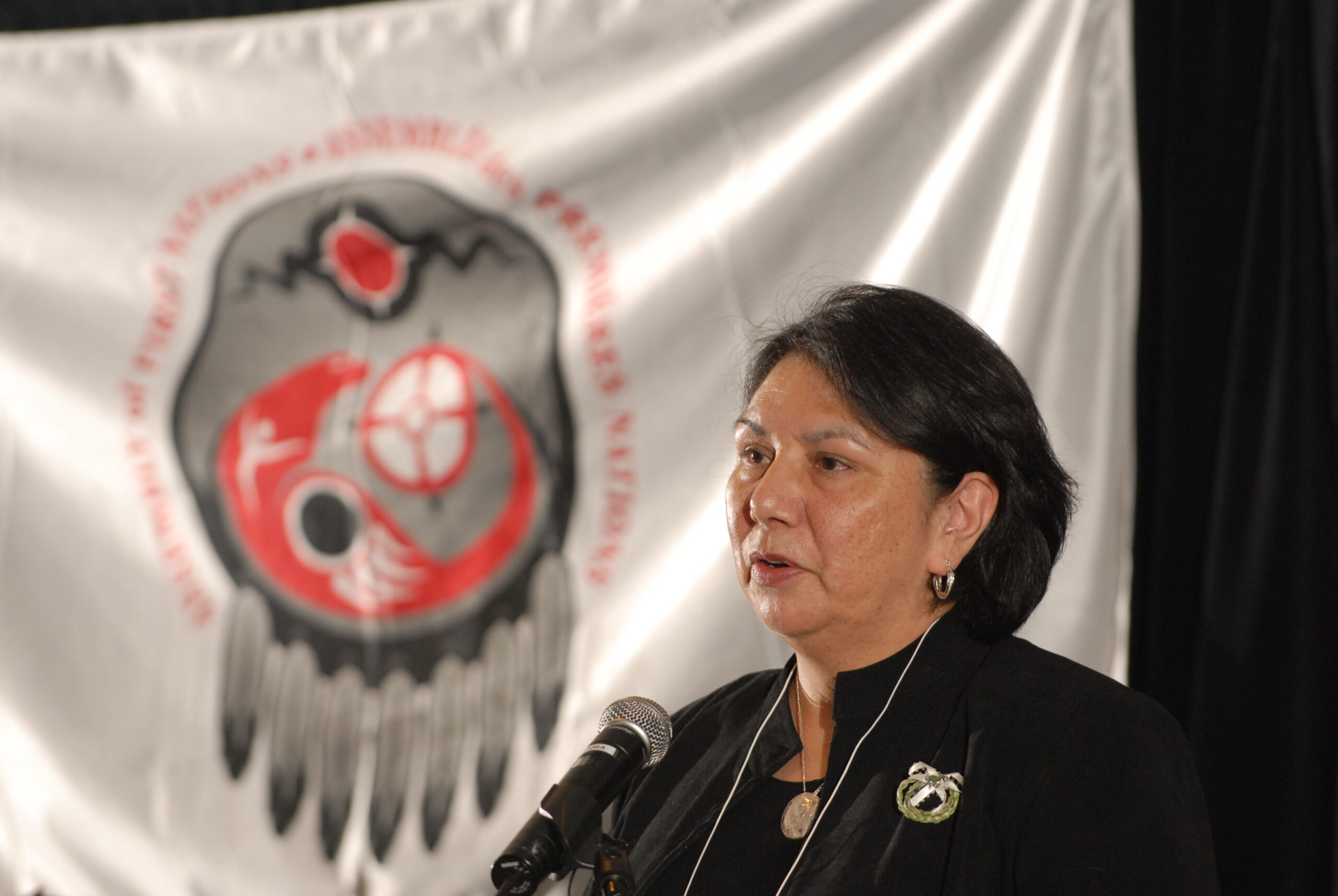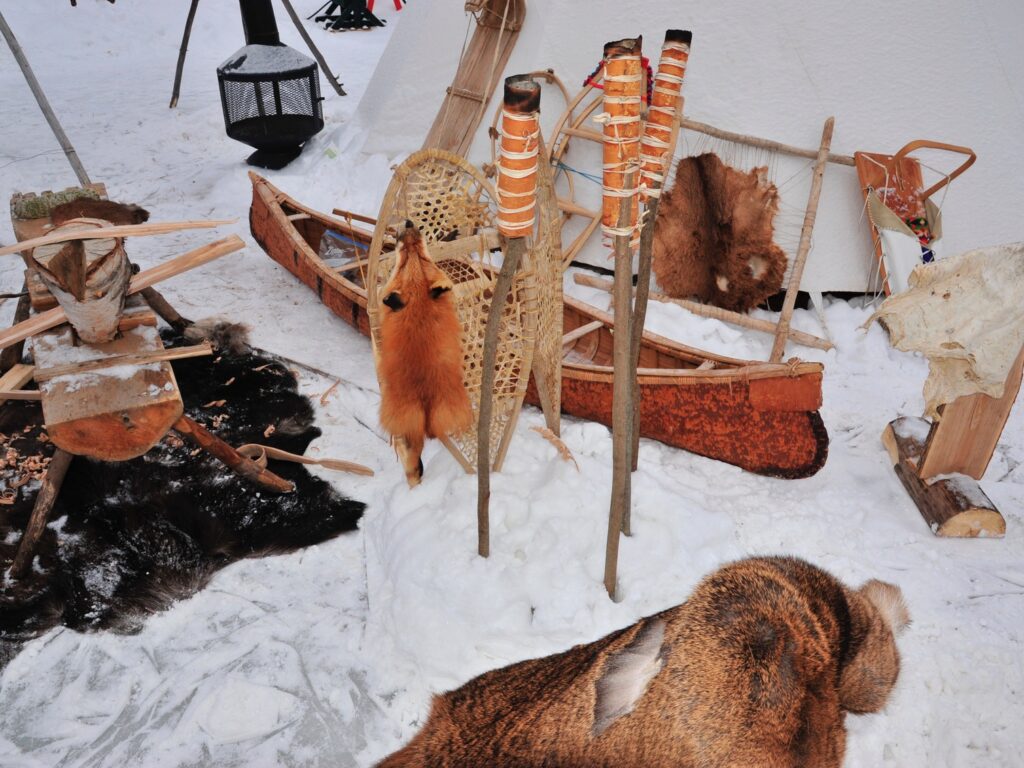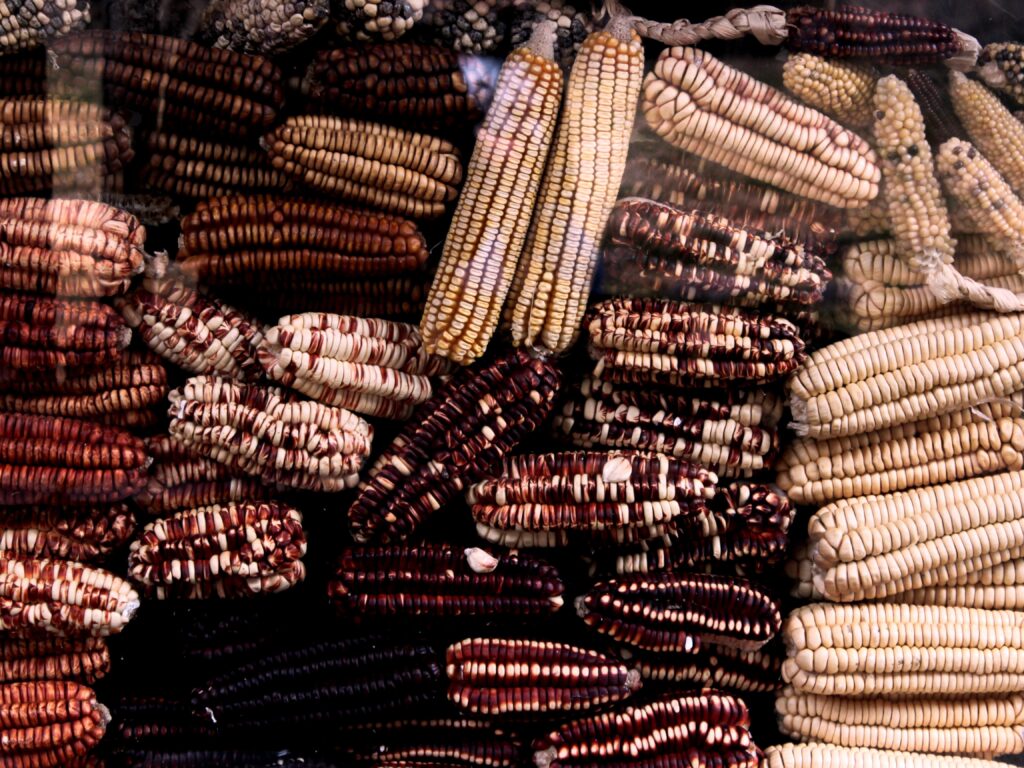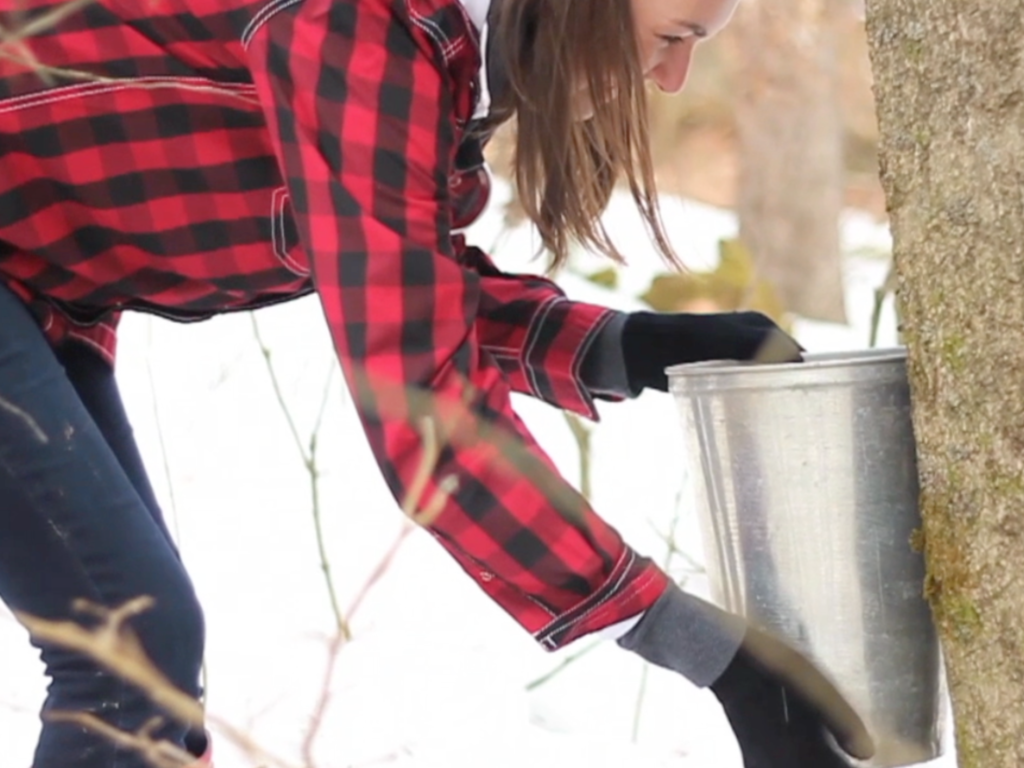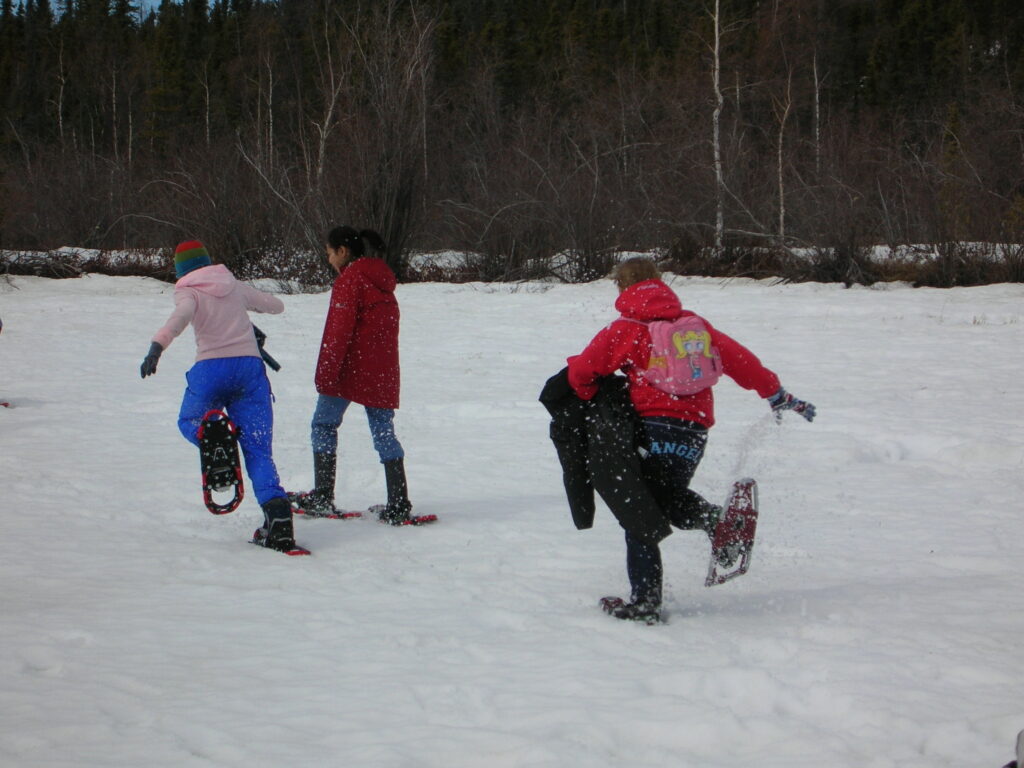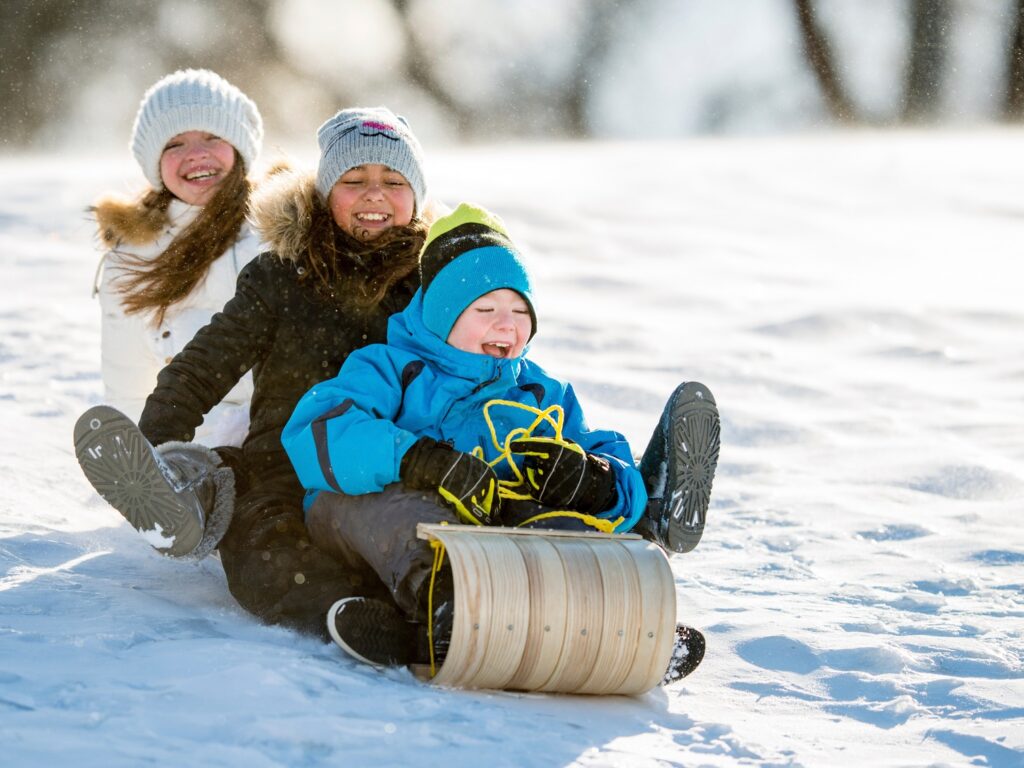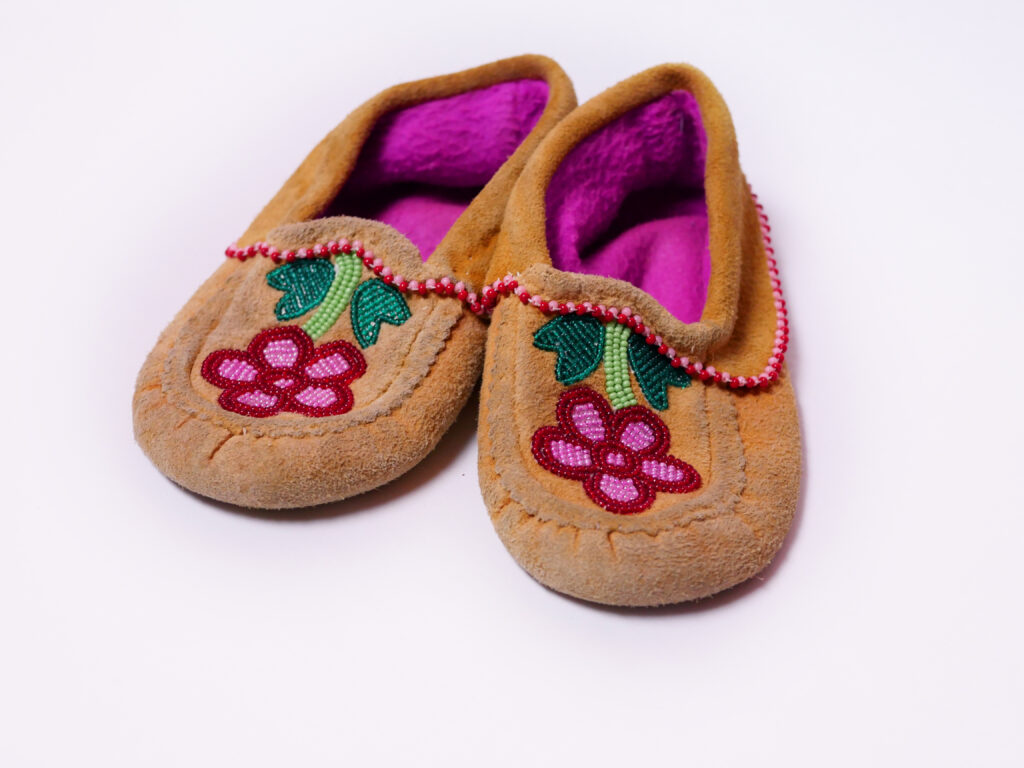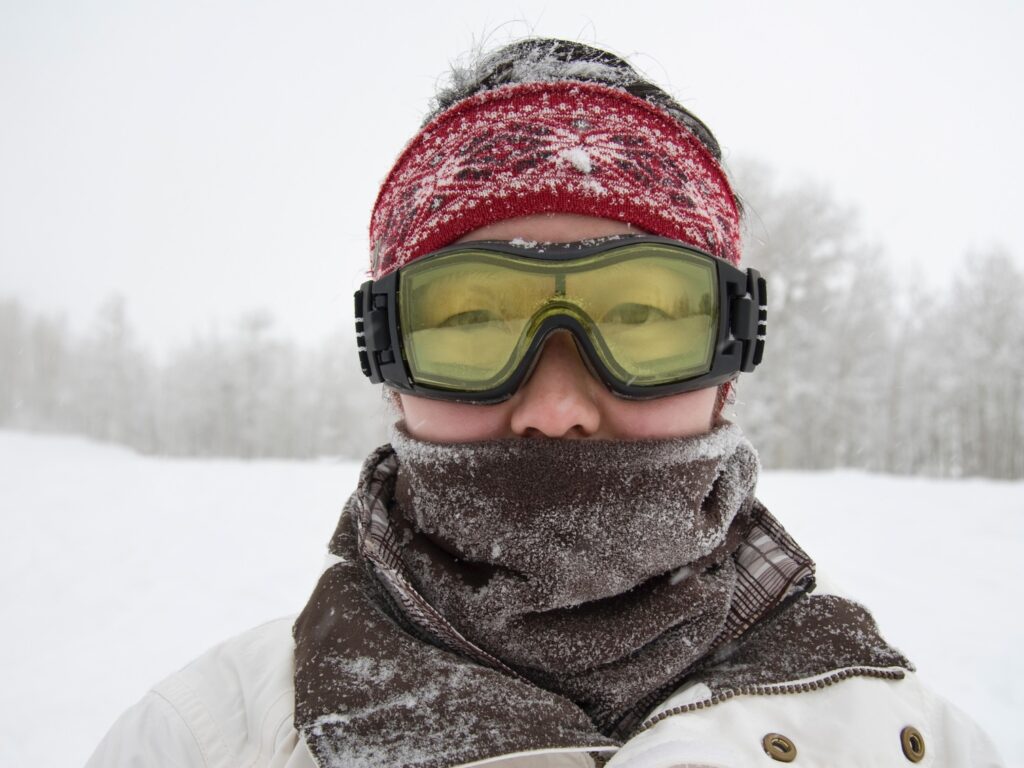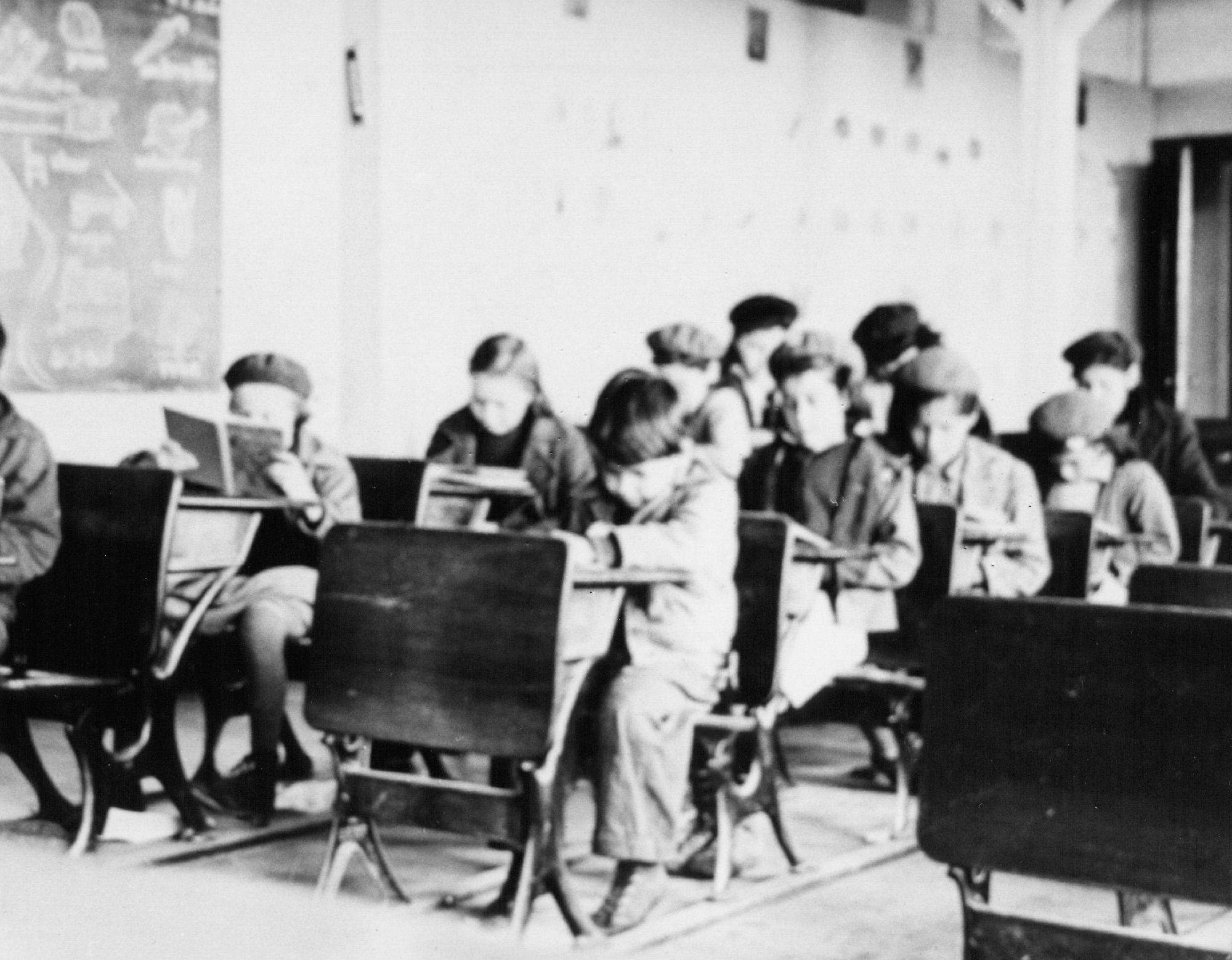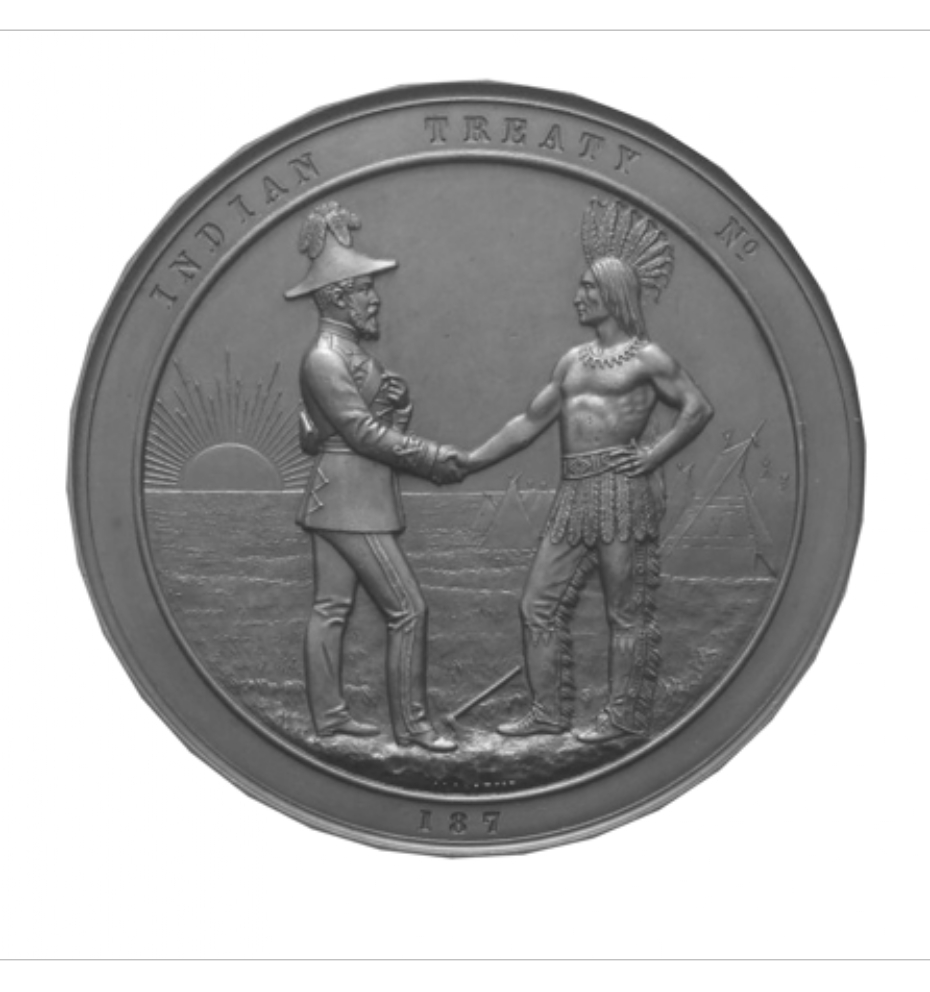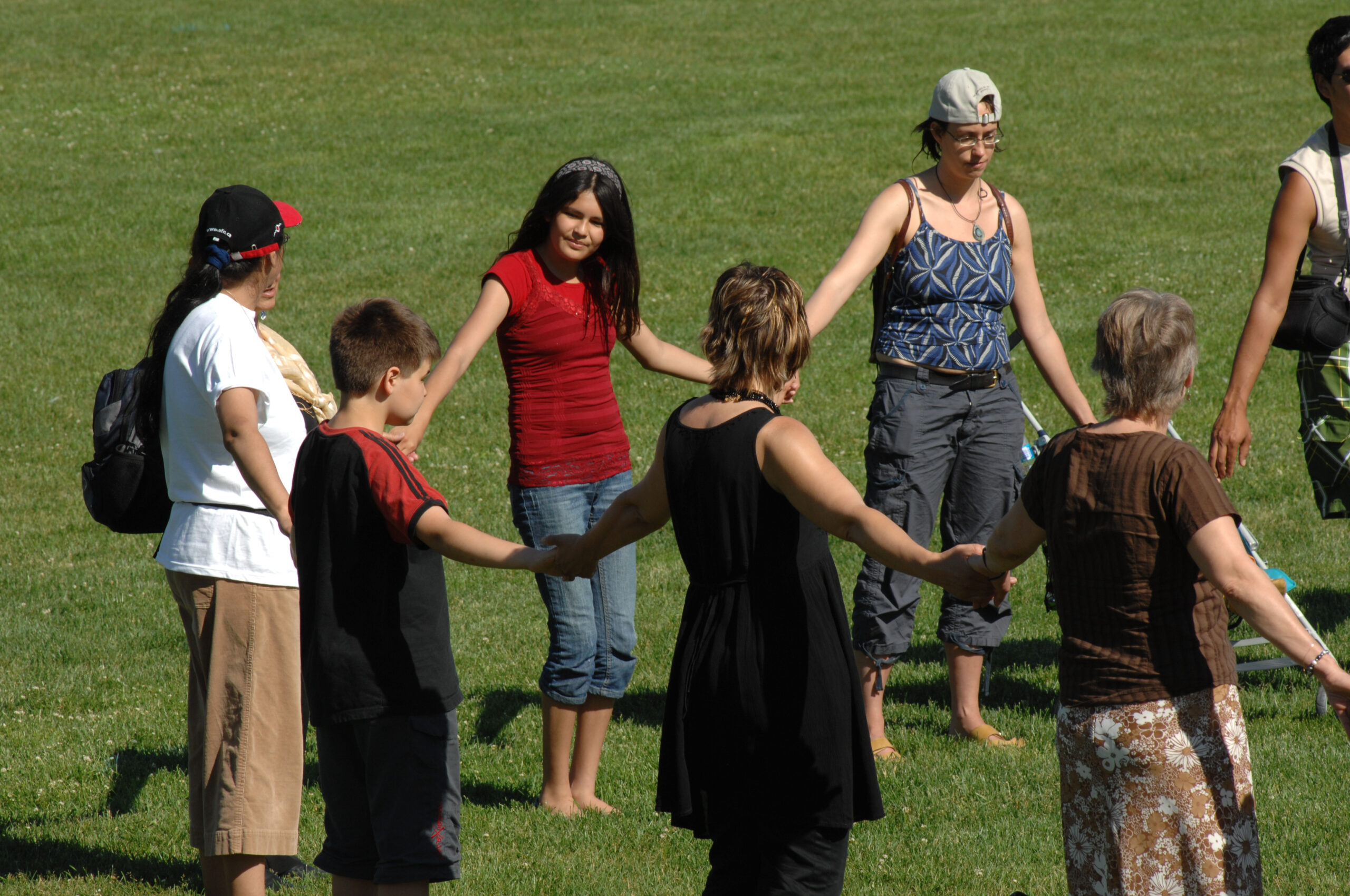The Dimensions of Cultural Competency in First Nations Education
Culturally competent First Nations education involves acknowledgement of the values and characteristics of First Nations cultures as well as of the events and circumstances that influence First Nations quality of life, whether on the prairies, woodlands, or on the west coast. These values, characteristics and events are dimensions” of cultural competency in First Nations Education. Some of these dimensions of cultural competency are summarized in the following pages.
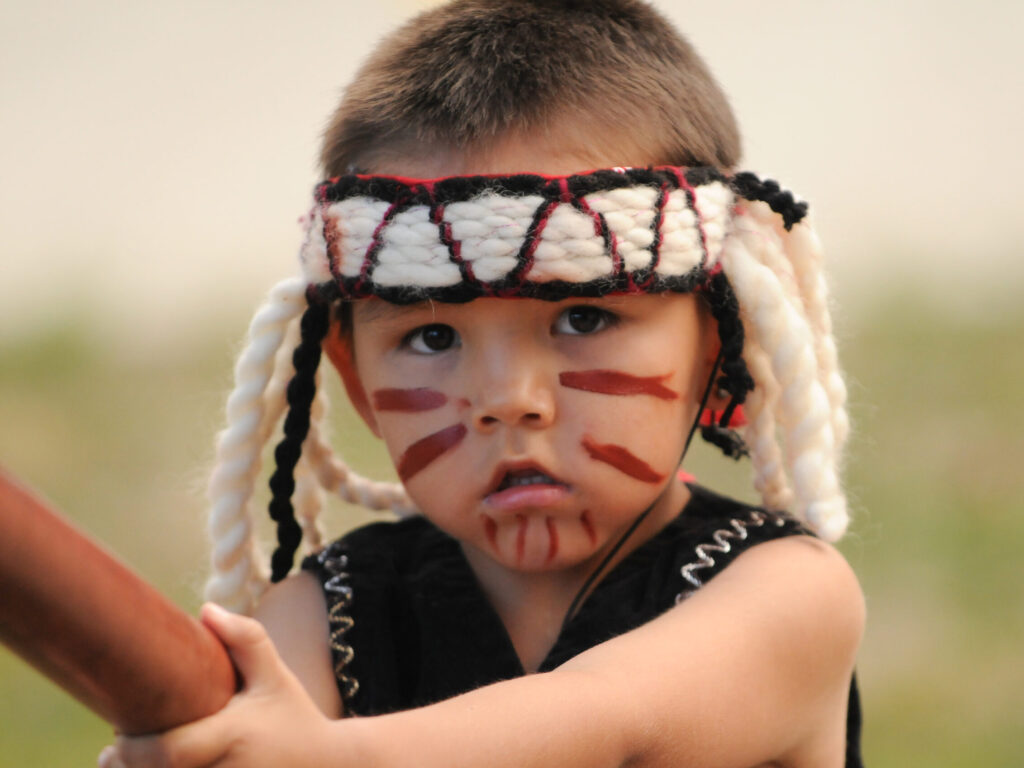
Elders
Elders are community members who have the respect of the people because of their wisdom and knowledge of traditional customs, language and culture, regardless of age or gender. Elders earn this status through their dedication, experience, and understanding of the need to strive for balance and harmony with all living things, and are often consulted on issues in the community. One of the best ways to approach an Elder, especially if you are from outside the community, is to introduce yourself by telling them your first and last name and giving them background information about who your parents and grandparents are and which community you are from. Then you may present your gift of tobacco and ask the Elder for guidance. This gives the Elder the opportunity to decide if he or she will be your teacher, or if they will refer you to someone else.
“We need to make the world understand that we still know who we are… We need to talk together as family so that we can leave a legacy for the little ones – we are their family, and it is our responsibility to lay this out for our little ones. The creator will give us the direction.”
— Elder Elmer Courchene, Sagkeeng First Nation

How to present tobacco
Traditionally, Elders are offered tobacco when you ask them to share their knowledge. Generally, when giving tobacco, it is placed in front of the Elder and your request is then made. The Elder indicates acceptance of your request by picking up the tobacco. In some practices, if you hand it directly to the Elder you do not give him/her the opportunity to accept or pass on your request—it takes away their choice.
In terms of presentation, a small amount of tobacco is generally wrapped in a small piece of broadcloth and tied with a thread or piece of yarn. These are called tobacco ties. The cloth is usually in one of the four sacred colours—red, white, yellow, or black (or blue), although red is most common, and if you don’t have those colours, it’s acceptable to use other cloth. The minimum amount of tobacco is the amount needed to use in a Ceremonial Pipe (about the size of a walnut), but giving a pouch of tobacco is also acceptable. Offer a cigarette only as a last resort. Tobacco is a sacred medicine and only commercial tobacco or tobacco in its natural form (kinikinik) is generally acceptable.
Some people have asked if a mixture of ‘healthy’ herbs or other medicines can be used instead of tobacco. The answer is generally no. Whatever your views are on tobacco, it is still a sacred medicine to traditional First Nations people.

How to find an Elder or resource person
Don’t feel you are alone on this path of developing cultural competency. Every First Nation community has people who are willing and able to visit schools and to share their knowledge and wisdom. If you are looking to connect with your local First Nations community, the local school is a great start. If there is no local school, connect with the teachers of First Nations students in your area. If you are the teacher, connect with your students and ask them who in their community practices traditional activities and attends ceremonies. If you are still not having any luck, contact the regional First Nations political office (every province and territory has them), or the Assembly of First Nations, and ask for Education contacts in your area. Sometimes it takes a little patience, because there is still mistrust in communities, but cultivating relationships with your local First Nations will definitely be worth it!

Sacred Medicines
Sweet grass, sage, cedar and tobacco are sacred plants that have traditional healing, ceremonial and spiritual meanings and applications. These sacred medicines are used individually or mixed together and burned, in a process called smudging, to produce smoke that cleanses and purifies the mind, body, and spirit.
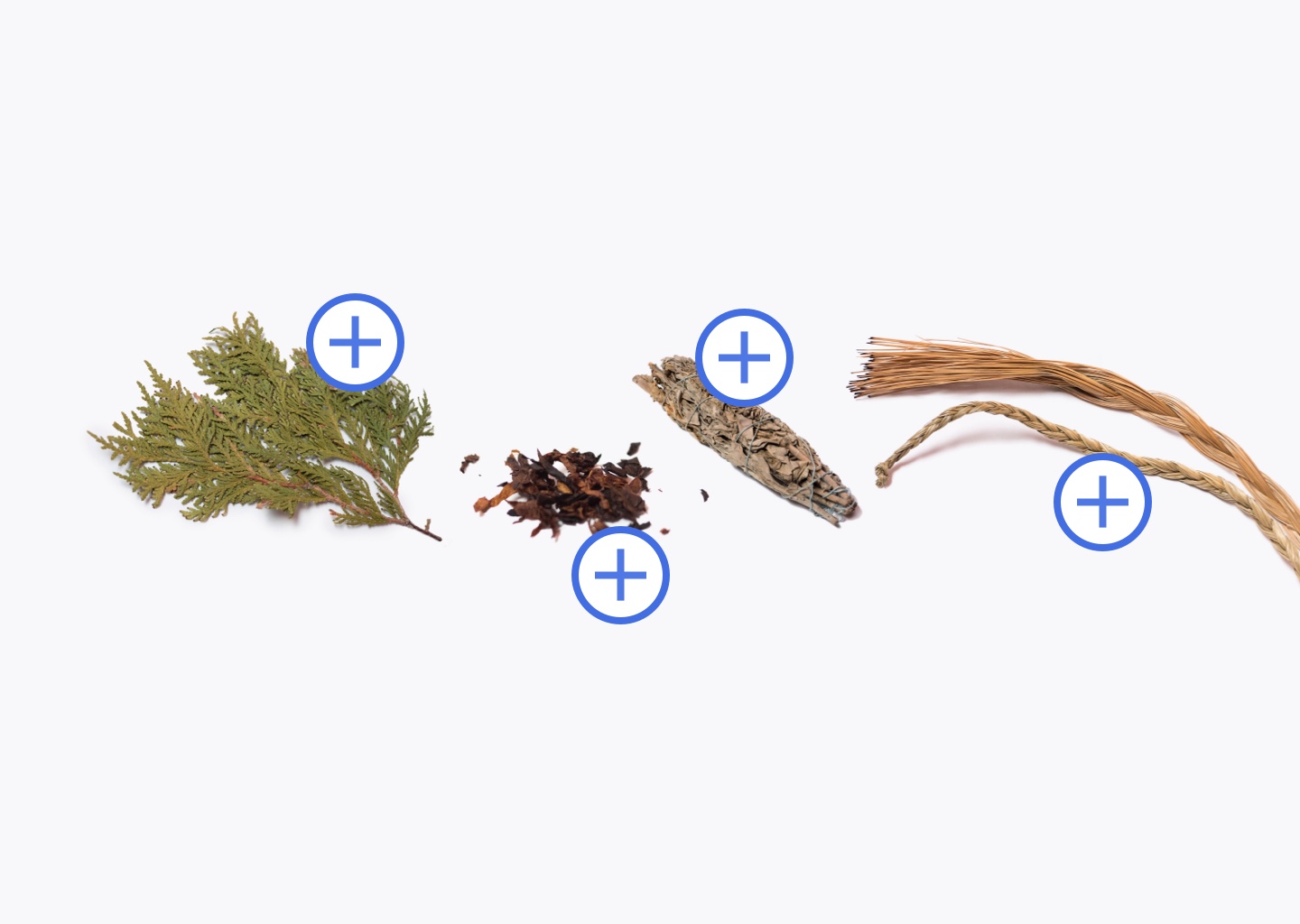
Cedar
This sacred medicine is used for healing and protection.
Tobacco
This sacred medicine is used for prayer offerings and to give thanks. Tobacco is also used when asking something of an Elder/Knowledge Keeper.
Sage
This sacred medicine is used for cleansing and releasing negative energy.
Sweet Grass
This sacred medicine is used for purification and creating positive energy.
Listen for more information on why we smudge.
Talking Circles
Talking circles are a traditional First Nations way of communicating, and a striking example of demonstrating respect for others. Participants are invited to sit in a circle to discuss and reflect either generally, or about a specific topic. In a circle, everyone is equal, and has a voice. There is no hierarchy. Each individual is given an opportunity to talk about his or her opinions and feelings without being interrupted. A facilitator and/or Elder will open and close the circle, and will generally use a talking stick (or an object like a feather or stone) during the circle to pass to each person who speaks. The group understands that the person holding the talking stick and speaking should be listened to with courtesy and respect. A person may disagree with another’s opinion, but they must express themselves during their turn to speak only. When the speaker passes the talking stick to another person in the group, it is a signal for that other person to express their thoughts and ideas. Some talking circles can be very fact based, while others can be very feelings based and emotional. It is important to be mindful of your audience and to ensure that you create a safe and supportive space for people to share their thoughts and feelings.
Sweat lodge ceremonies
Sweet Lodges, usually dome-shaped and round structures, are a place for spiritual, mental and physical renewal. People enter a Sweat Lodge according to certain rituals and customs. Inside, water is poured on hot rocks to produce steam and high temperatures, and additional rituals can be performed to help people inside the Sweat Lodge undergo purification and cleansing. There are many communities offering these ceremonies to those interested in participating and learning more about First Nations culture. These ceremonies are traditionally conducted by spiritual medicine men and women who have trained and apprenticed for years before being selected to carry on the teachings by their Elders.
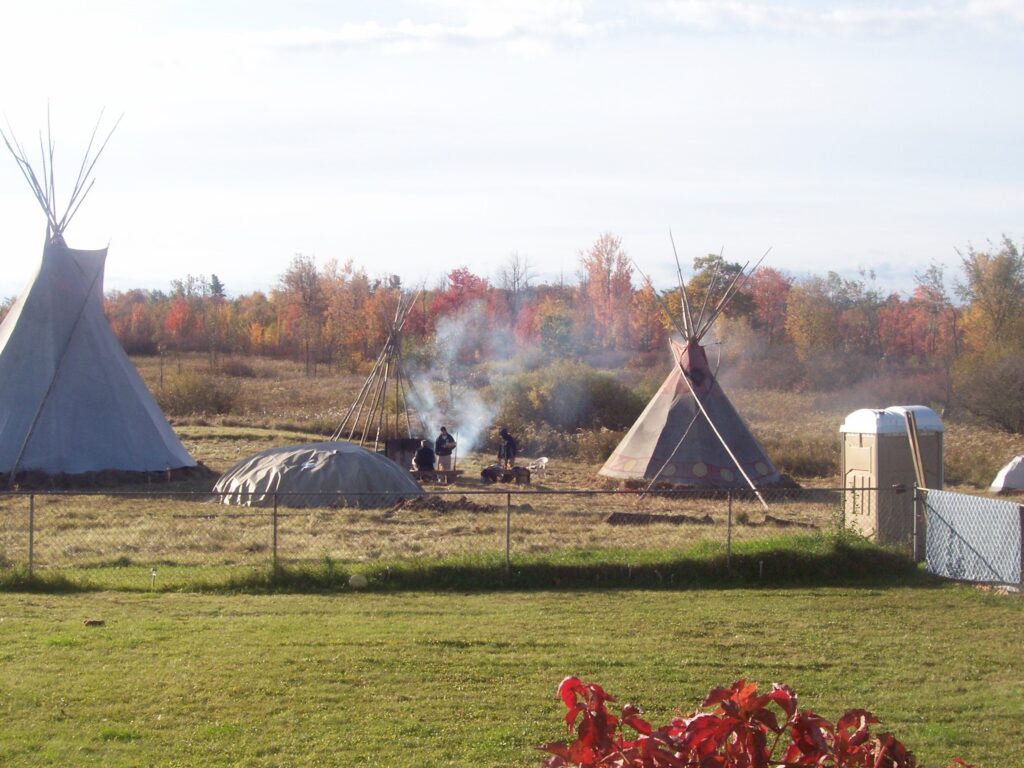
Medicine wheel
The Medicine Circle, also known as the Medicine Wheel, is used by many (but not all) First Nations in different ways. Examples of the symbolic representation may include (and are not limited to): the four directions (north, south, east and west), the four elements of nature (air, fire, water, and earth), the four seasons (winter, spring, summer, fall), the four human races represented as the four sacred colours (red, white, yellow, and black), the four stages of life (infant/child, adolescent, adult, and elder), the four dimensions of personal development (mental, emotional, physical, and spiritual), spirit animals and / or clans (various interpretations), and times of day.

An example of Oji-Cree medicine wheel teachings:
Regalia
Regalia is the proper term for the outfits (clothing and adornments) dancers wear at traditional gatherings and ceremonies including Pow wows and Sun Dances. There is much meaning and symbolism in the colours and choices of accessories that regalia makers use. Some of this information is very old and traditional and has been passed down through many generations. Regalia may be passed down from or made by friends and relatives, or made by the dancers themselves or by professional artists. A variety of skills are involved—leatherworking, sewing, beading, colour selection, for example. Regalia also matches the style of dancing and so there will be similar looking regalia for the different styles’ core elements, although there is great variety in the use of colours and materials. Some of the types of dance regalia include Grass Dance, Jingle Dance, Fancy Dance, Hoop Dance, and Smoke Dance, as well as others.
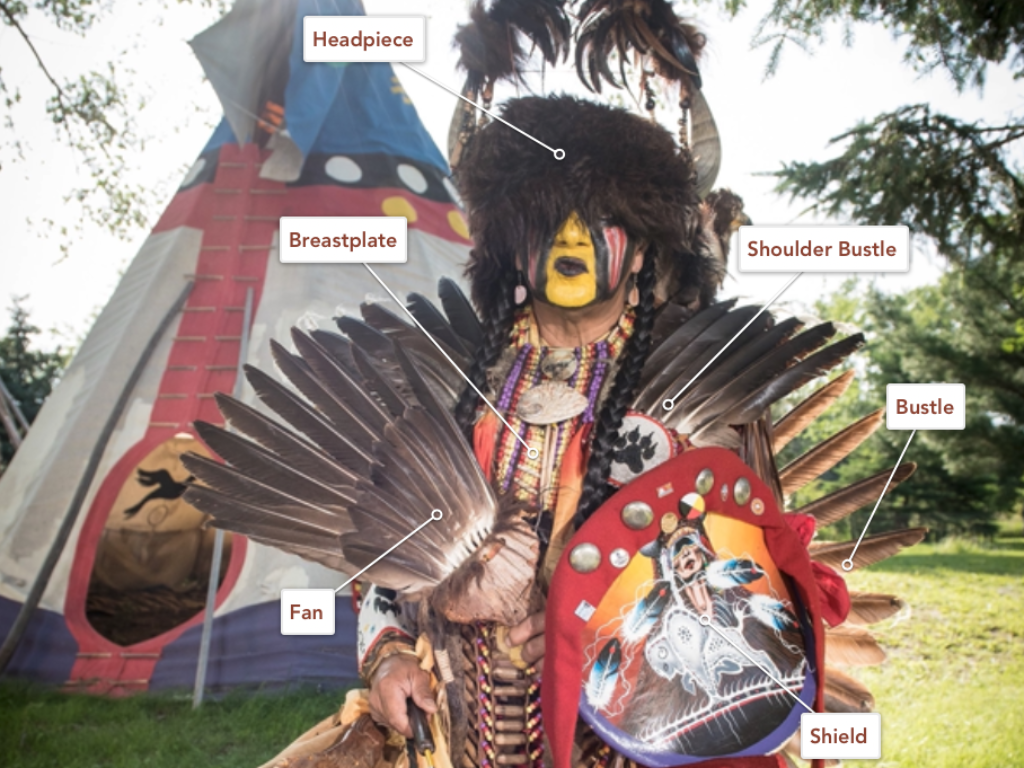
Storytelling
Storytelling connects individuals to their past, their legends, their history, their identity, and their culture. Every First Nation has its own stories that reflect and reinforce the society and its values. Some stories are at the very foundation of the society. A vivid example is the story of The Peacemaker, as described and adapted from Onondaga Nation: People of the Hills.
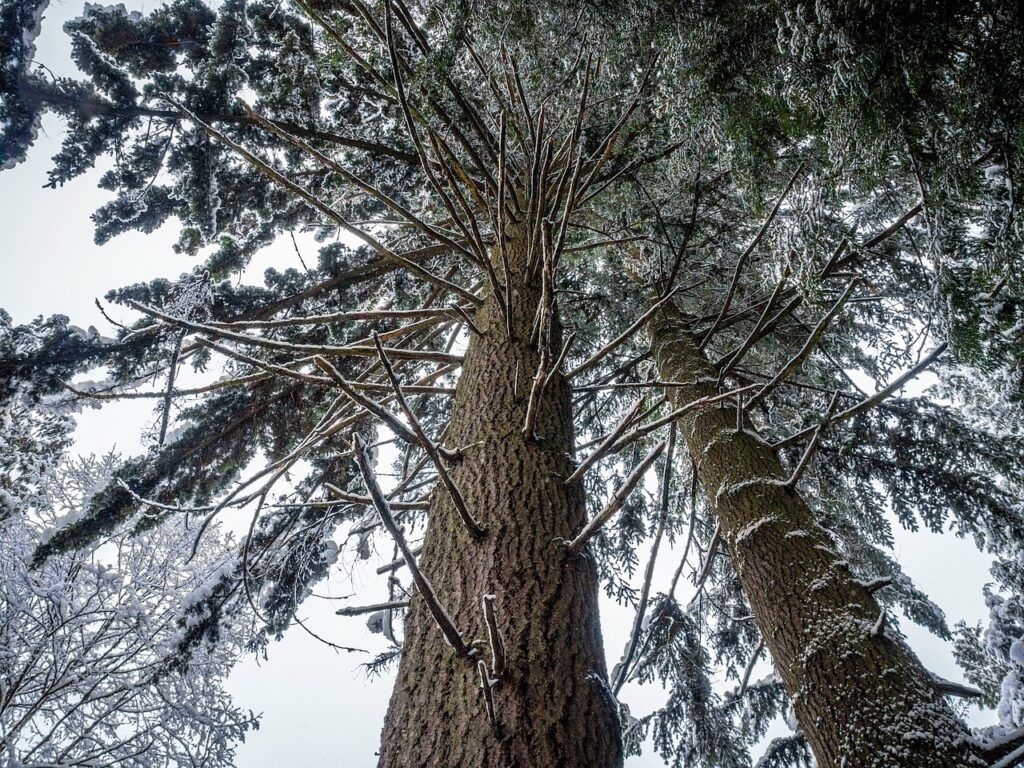
Listen to the story of the Peacemaker.
Drum
Drums are sacred objects found almost universally in all First Nations communities throughout the country. It is often said that the sound of the drum represents the heartbeat of Mother Earth, the giver of life, and helps to send messages to the Creator. Drums are traditionally played during ceremonies and celebrations. First Nations peoples have created various types of drums, usually made of carved wood and animal hides.
Medicine pouch
A medicine pouch is a sacred item that contains medicines like tobacco, sweet grass, sage, and cedar, as well as any other objects that are important to the carrier. It can be any size, colour, or design, although many people prefer them made of hide or leather. Generally the medicine pouch is worn around the neck or waist or carried in a pocket. Some carry theirs at all times, while others wear them only on special occasions. A medicine pouch represents spiritual protection to its owner.

Pipe
The pipe is smoked on ceremonial occasions, as a means of communication with the Great Spirit or Creator. Sacred pipe ceremonies are performed in different ways depending on the teachings of the Pipe Carrier, a person who learned cultural teachings from Elders, or who was born to the role, depending on the traditions of the First Nation. The bowl of the pipe represents the female aspect, while the stem represents the male aspect. Together the pipe symbolizes union and balance of female and male.
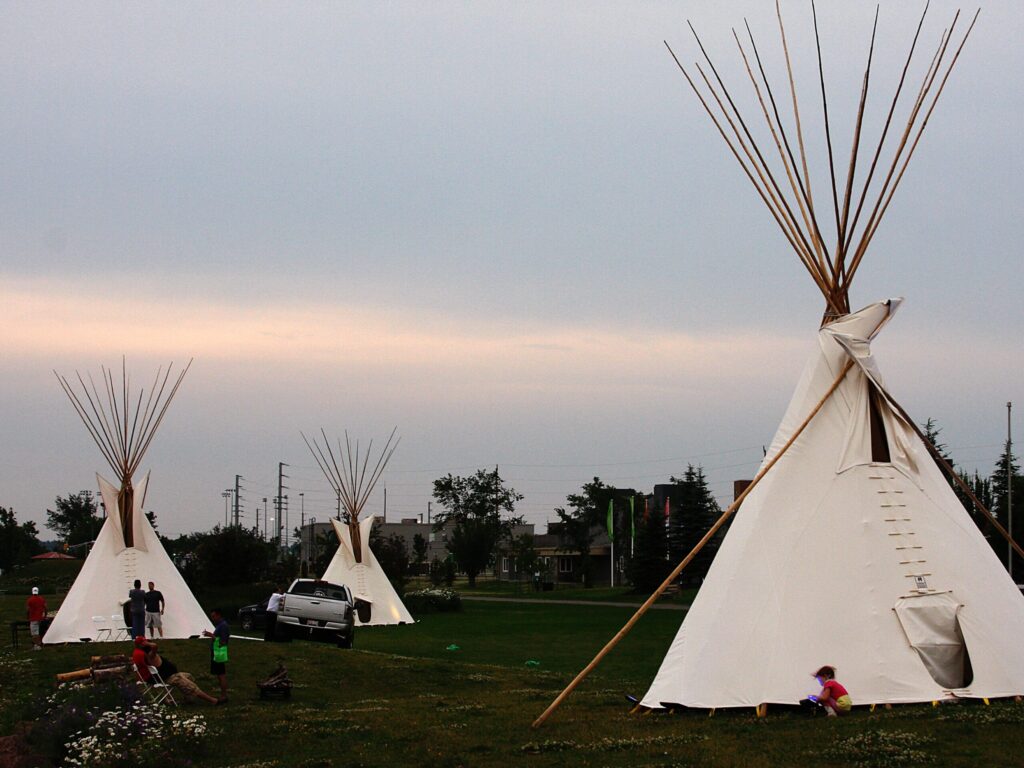
Pop Wow
The Pop Wow is an opportunity for First Nations peoples to gather, socialize, celebrate and share cultural activities like dancing, drumming, and feasting according to certain protocols. Traditional practices like sunrise, sunset and pipe ceremonies may take place. It is often a time to start or complete other ceremonies and rituals such as a berry fast, a rite of passage, a wedding, or a naming ceremony. Pow Wows always host dancing. Some of the dancing is recreational and spiritual, and some of the dancing is also competitive. There are many traditional families today that follow the Pow Wow circuit and travel all over the United States and Canada to do so.
“Sometimes the gatherings seem short. We dance hard to make indelible impressions on the children and youth, they are why we do these things. These are their formidable years.”
— Dale Matasawagon, Aroland First Nation
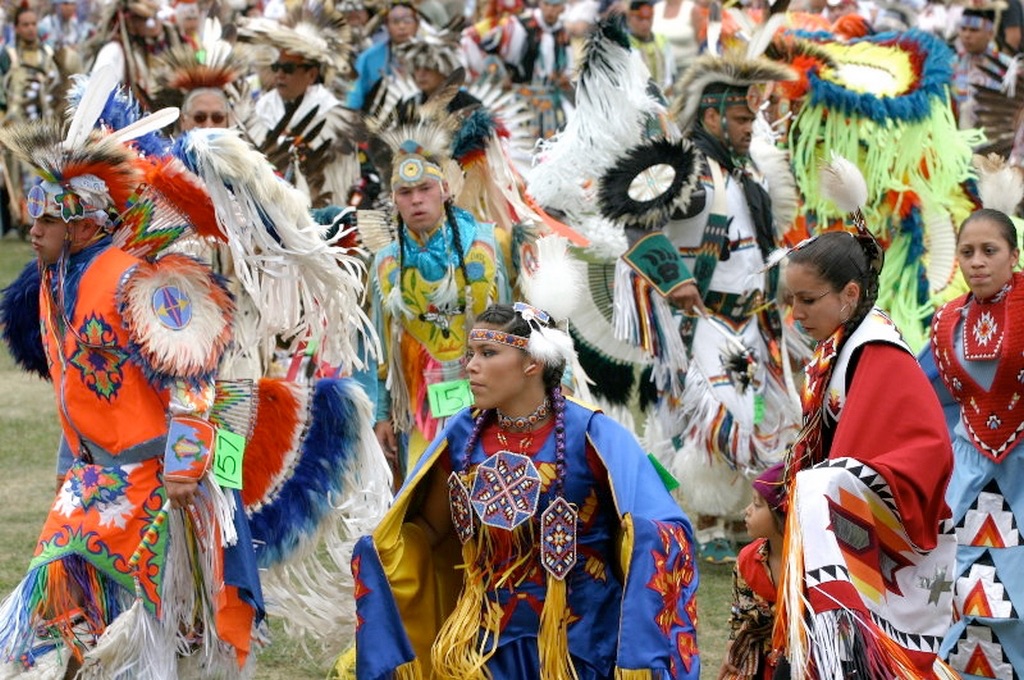
Potlach
The potlach is a traditional gathering held by many of the coastal peoples. The word itself, which may be derived from the Nootka word pachitle, is a Chinook Jargon word that means to give. The Gitskan today call the same event The Feast, and the Cowichan know it as the Great Deed. The different names of the potlatch reflect both the different languages and cultures that share this tradition, as well as indicating some of the different occasions for which a potlatch is held. The potlatch was also a primary means of distributing wealth. The ceremony culminated with the host presenting gifts to every guest which strictly corresponded with each individual’s social rank. Gifts could include canoes, carved dishes and eulachon oil.
The federal government outlawed potlatches in 1884 but the ceremony continued in many communities, and in 1951 the law was deleted from the revised Indian Act. Today potlatches still occur, but the gifts tend to be money or practical household items and they usually last only a weekend, while in the past they may have gone on for two or three weeks. Many Nations throughout Canada practice some form of gift giving or give-away during feasts, celebrations, and ceremonies.

Eagle
The eagle symbolizes qualities that are important to many First Nations—great courage, strength, and vision, and acts as a messenger between people and the Creator. Eagle feathers must always be treated with deep respect, and there is ceremony and protocol attached to giving and receiving eagle feathers.
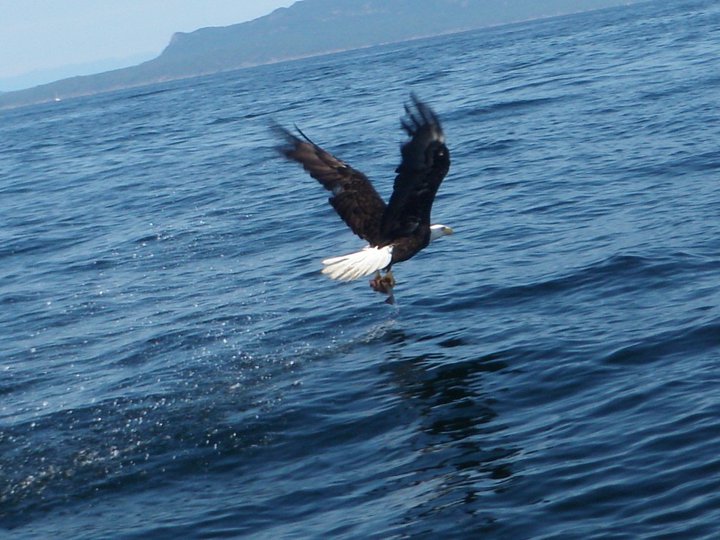
Songs
Traditional songs are important parts of ceremonies and celebrations, as a form of prayer and respect for the Creator. First Nations usually have a signature song that represents their Nation. Generally the songs are accompanied by a drum, though rattles are often used as well. Some songs may be specific to men, while others may be specific to women. There are also children’s songs. There are specific songs for specific types of dances and ceremony. Many events begin with an honour song and opening prayer, and close with a traveling song.
Listen to Wishita Dooya - A song for the Water.
Listen to the Strong Woman Song.
Dance
Dancing is a form of prayer and respect for the Creator. The many styles of dancing, regalia and adornments represent historical and cultural events and teachings. There are many different styles of dance that feature individual, couple, and group dances. Many Pow Wows will also feature various inter-tribal dances, including Round Dances, which invite all participants to dance together in unity. Pow Wow Dancing involves both recreational and spiritual dancing as well as competition dancing.
“Dancing makes me feel closer to my culture and traditions. I feel proud that I will be able to pass this on to my children.”
— Suzanne Campeau, Nipissing First Nation
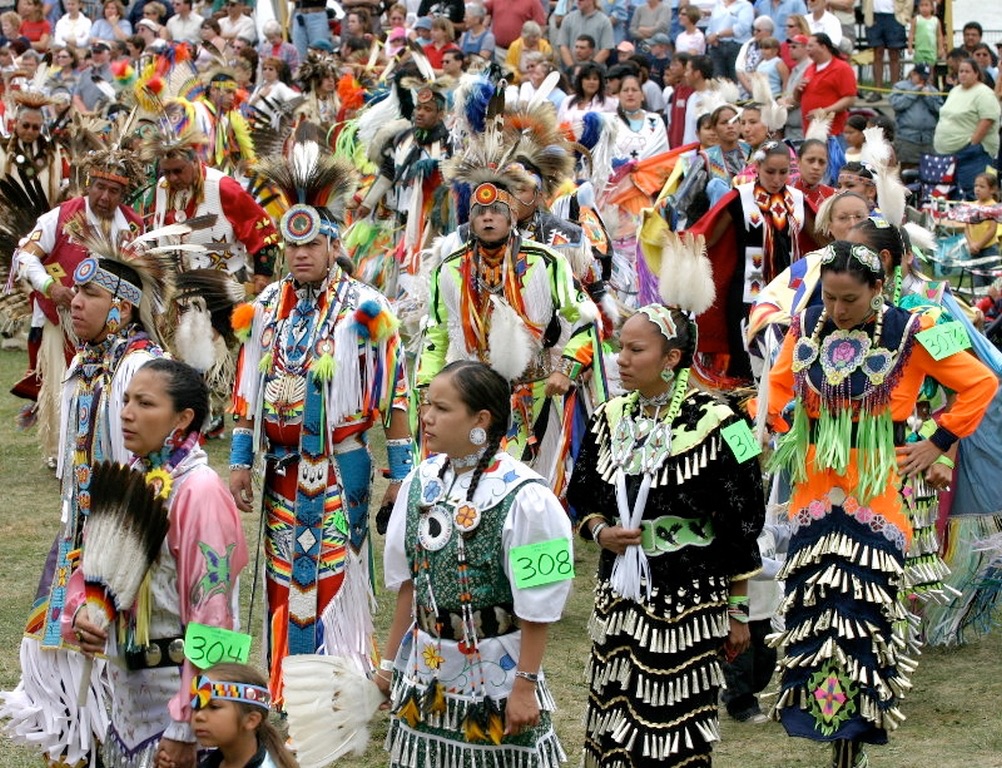
Smudging
Healing oneself or another must be preceded by the elimination or cleansing of negative thoughts and feelings. This can be achieved by smudging, which involves the burning of certain traditional medicines like sage, cedar and sweet grass, collecting the smoke with one’s hands, and rubbing or brushing the smoke over one’s body. The smoke is gently rubbed over the eyes to encourage one to see good things and to watch and be observant; over the ears to encourage one to hear good things and to listen carefully; over the mouth to speak good and kind words; and over the heart to feel good thoughts, feelings and intentions.
Indigenous knowledge
ation systems, there is a growing awareness of the richness of knowledge that exists within First Nations perspectives and experiences. Value must be assigned to traditional and oral knowledge, including Indigenous worldviews concerning the nature of learning, spirituality, and creation stories. More and more, the science world is turning to our Indigenous Knowledge Keepers to confirm research and scientific findings. There is an increasing number of people and organizations specializing in the integration of Indigenous Traditional Knowledge (ITK) into Western systems
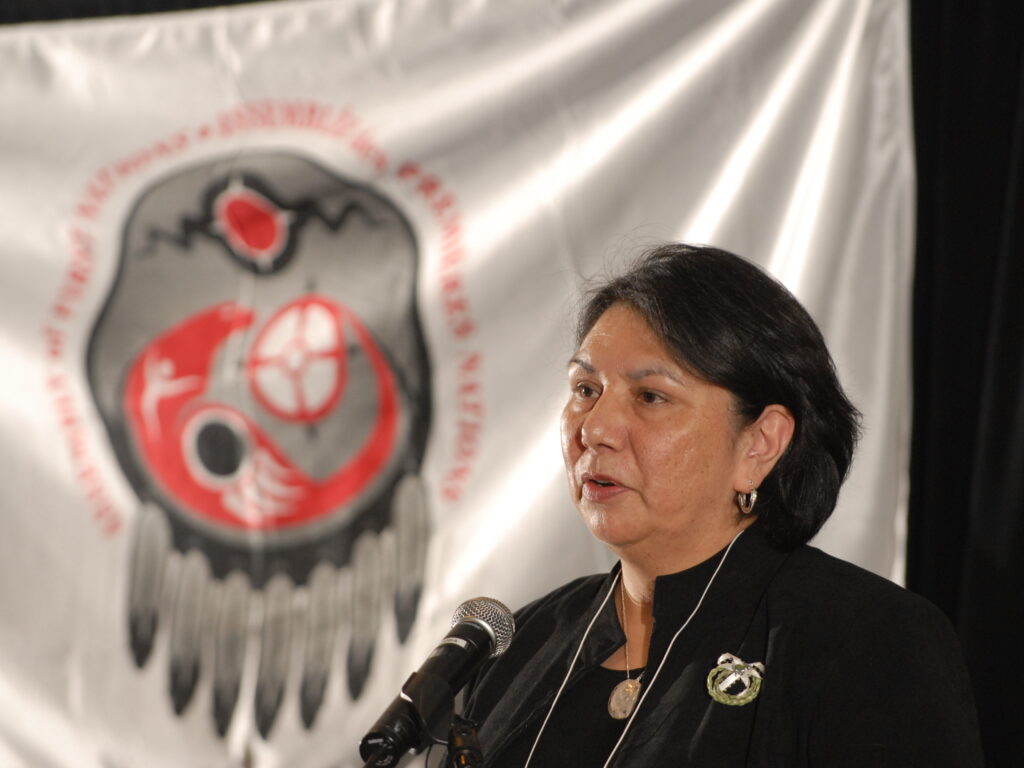
Indigenous Contributions
Indigenous peoples invented and developed a rich variety of techniques and innovations in a wide range of areas, including transportation and navigation, health maintenance and improvement, recreational and competitive sports, and nutrition and food supply.
Some examples of Indigenous contributions include:
- Birch bark canoe
- Corn
- Maple syrup
- Lacrosse
- Snowshoes
- Wild rice
- Toboggan
- Kayak (Inuit)
- Vitamin C-rich cures for scurvy
- Moccasins
- Snow goggle
- Chewing gum from spruce sap
- Petroleum jelly for skin protection
- Willow bark as a pain killer, the main ingredient in Aspirin (acetylsalicylic acid)
- Pine tree tea for coughs
- Chocolate (Mayans)
Biases and stereotypes
Cultural competency also involves avoiding and correcting biases and stereotypes in current and historical sources of information. Biases may take many forms. Examples of bias include omitting relevant information, referring to negative attributes and ignoring positive attributes, using unverified and invalid statements, perpetuating stereotypes, an d making generalizations.
Jessica Diemer-Eaton offers important insights into the kinds of stereotypes that might creep into the classroom and suggests the following actions:
- Reject insulting, hurtful and disrespectful terminology.
- Avoid concepts like Indigenous people wasted nothing; in fact this idea is neither unique to Indigenous people nor is it entirely accurate.
- Reject the incorrect belief that Indigenous people didn’t believe in owning land; in fact, First Nations people did practice land ownership, including tribal territories, communal lands, family camps, and agricultural use of land.
- Reject an incorrect belief that Indigenous people were passive inhabitants of the land; in fact, Indigenous people used various methods of changing their environment, exploited deposits of copper, managed the undergrowth of forests by annual burning, created and developed agricultural crops like corn, tapped maple trees for their sugar, and engaged in other creative ways of interacting with their environment.
- Recognize that nomadic patterns of life were not characteristic of all Indigenous people; many First Nations lived in settlements either year-round or for most seasons.
- Acknowledge that Indigenous people were not necessarily taken advantage of in trading with Europeans. Rather, Indigenous people were active and often demanding participants in their trading interactions with Europeans. For example, Europeans may have traded silk, glass, copper and silver for old, worn and torn beaver furs.
Colonization
Colonization refers to the process by which a country or nation takes control of an area outside of its borders and then sends its citizens to live in the controlled area. From the time Europeans arrived in North America, an event often referred to as “contact,” First Nations have been subjected to profoundly devastating consequences of colonization by European nations.
In her book, Decolonizing Education, Nourishing the Learning Spirit, Dr. Marie Battiste eloquently conveys the impacts of European colonization in Canada on Indigenous people. She emphasizes the importance for people to understand their position in relation to colonization and accept and be prepared to unpack privileges involved with whiteness, racism and Eurocentrism.
It is time to make a genuine effort in understanding the deep-rootedness of Aboriginal knowledge, language and culture as a powerful and sacred bond with the land, community and people.
— Dr. Marie Battiste
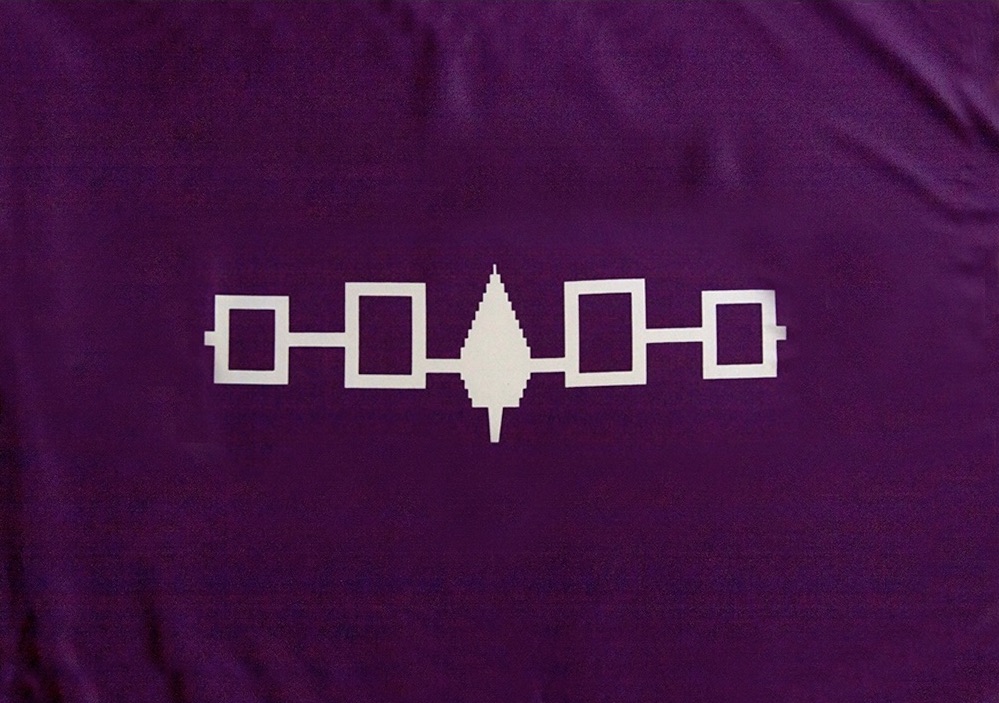
Residential Schools
Residential Schools were boarding schools for Indigenous (First Nation, Inuit and Métis) children and youth. The political thinking of the time sought to kill the Indian in the child and civilize Indian children by separating them from their heritage and customs and indoctrinating them to European and Christian ways. Pursuant to the Indian Act and financed by the Department of Indian and Northern Affairs and the Federal Government, the forced separation of children from their families through the Residential School system started in the 1800s. The schools were staffed and run by Christian religious institutions. Youth were prevented from acquiring the skills, knowledge, attitudes and understandings of their First Nations cultures. Many youth suffered humiliation, deprivation, and physical, sexual and psychological abuse in the residential schools. As adults, many of these students led disrupted lives of pain and confusion that had negative influences of other members of their communities.

Treaties
Treaties are agreements made between groups of people. Treaties are part of the heritage of First Nations peoples, who entered into agreements with other First Nations about sharing lands for hunting and trapping long before the arrival of Europeans in North America. European nations worked out a number of different arrangements with Indigenous nations. The history, interpretation and implementation of treaties have been, and continue to be, contentious and controversial. First Nations contend that their Elders agreed in spirit and intention to the notion of Peace and Friendship Treaties, and many communities have passed on the oral history of those first treaty agreements. Critics have argued that all treaties between Indigenous peoples and Canadian governments are potentially flawed and subject to re-examination.
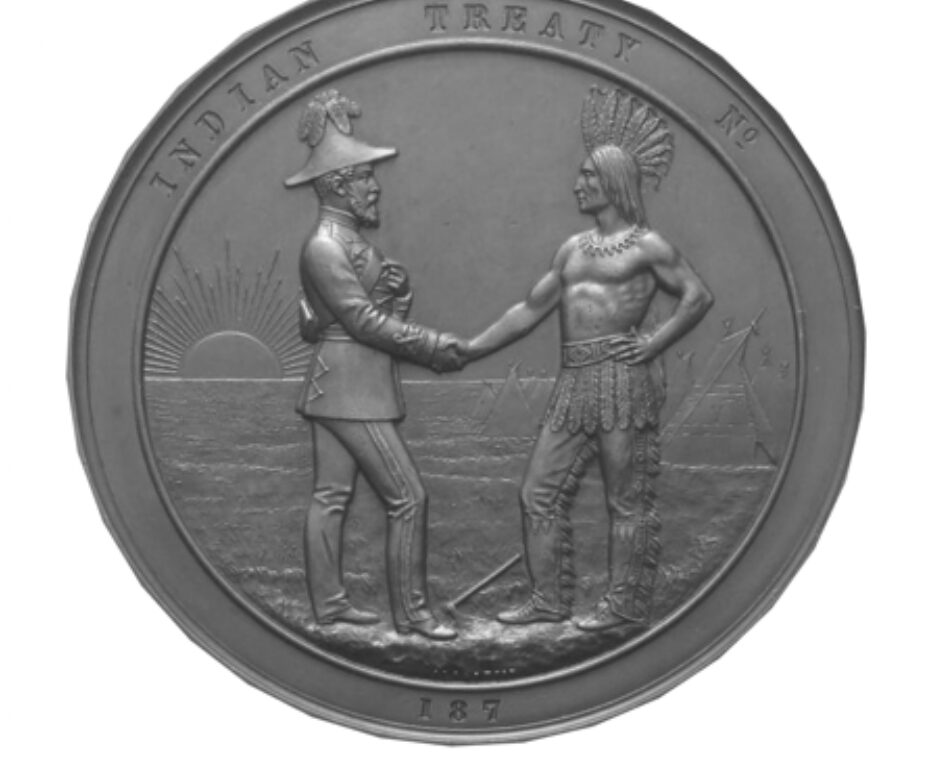
Transcendental meditation (TM) and the quiet time
In 2008 Maharishi Mahesh Yogi, the founder of TM and the Global Country of World Peace (GCWP), declared, “Indigenous Peoples are the custodians of Natural Law,” and must be supported as leaders in this development. Since the November 2, 2010, Global Conference on Health: First Nations as Custodians of Natural Law in Restoring Healthy Sustainable First Nations Communities, interest and momentum has been building on Traditional Natural Law based approaches such as the practice of TM and the Quiet Time program in First Nations schools and communities. The symposium addressed the First Nations’ social determinants of health in the areas of education, culture, health, languages, housing, environment, and economic development. The conference also shed light on this five thousand year old ancient Vedic Indigenous knowledge and practice of TM. TM is not a religion, philosophy nor lifestyle; and complements First Nations traditional ceremonies and teachings and is world-renowned as a scientifically evidence-based tool for creating social cohesion and self-development. Over the past 40 years, some First Nations people have been practicing TM. In fact, Traditional Natural-Law based programs of Transcendental Meditation and the Quiet Time Programs complement and / or mimic the meditative practice that many First Nations have practiced through sweat lodge and other ceremony for thousands of years.
